

















The Art & Soul of Raleigh ARTIST LAURA CASAS HIKES WITH FISHING HOLES + THE WOMEN REVIVING DOWNTOWN RALEIGH A NEW TAKE ON THE NOTORIOUS PIRATE & JULY 2022 wa w ltterrmaagagazizinene.ccom om R J

 LOVE IN VERONA COLLECTION
Raleigh’s Village District
LOVE IN VERONA COLLECTION
Raleigh’s Village District




















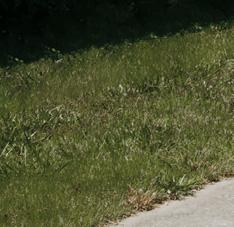







JOHNSON LEXUS OF RALEIGH 5839 Capital Blvd. Raleigh, NC 27616 (919) 877 - 1800 JohnsonLexusRaleigh.com JOHNSON LEXUS OF DURHAM 1013 Southpoint Autopark Blvd. Durham, NC 27713 (919) 433 - 8800 JohnsonLexusDurham.com
SEASON 2022-2023







JER O ME R O BBINS’ THE CO N C ER T SEPTEMBER 22-25, 2022 Raleigh Memorial Auditorium



DRAC UL A OCTOBER 13-30, 2022 Fletcher Opera Theater
B EETH OVEN: SYMPH O NY N O. 9 NOVEMBER 17-20, 2022 Raleigh Memorial Auditorium




















ER THE NU TC RACK E 22 DECEMBER 10-24, 202 um DPAC/Raleigh Memorial Auditoriu




Presented by
TO G RIE G : PIAN O CO N C ER T 23 FEBRUARY 2-19, 202 ter Fletcher Opera Theat 40 MOZART: SYMPH O NY N O. 4 23 MARCH 9-26, 202 ter Fletcher Opera Theat CE O RPHEUS & EURYDI C 23 APRIL 27-30, 202 um Raleigh Memorial Auditoriu






TY S LEEPIN G BEAU T 23 MAY 18-21, 202 um Raleigh Memorial Auditoriu







th reasons
CarolinaBallet.com 919-719-0900 Ticketmaster.com 800-982-2787
SPONSORED BY:


2004 YONKERS ROAD, RALEIGH, NC 27604 | 919-754-9754
CENTER OF ATTENTION
Discover your love of design at Green Front Furniture. From traditional with a twist to boho chic, you’ll find inspiration in our 30,000 square foot showroom.
Anyone with an appreciation for unique furnishings, luxurious home decor, and hand-knotted rugs will feel at home.
From statement-making art to the accessories that complete a tabletop vignette, Green Front has the pieces you need to make any room the center of attention.

GREENFRONT.COM
Sutton Dining Table by Theodore Alexander, Beaufort Chairs by Hickory Chair, Hand-Knotted Rug from Pakistan, Art by Wendover



P A Y S A G E 1908 EASTWOOD ROAD, WILMINGTON, NC 28403 910-256-6050 4151 MAIN AT NORTH HILLS STREET #120, RALEIGH, NC 27609 984-200-9113 SHOP WWW.PAYSAGE.COM FINE HOME STORE AND INTERIOR DESIGN SERVICES



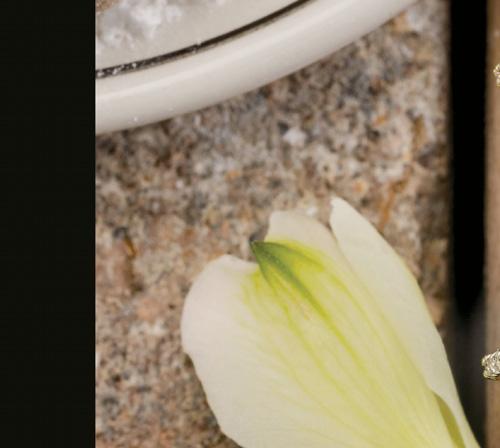







CERTIFIED DIAMONDS | ENGAGEMENT RINGS | CUSTOM JEWELRY MADE ON SITE | COLORED GEMSTONES Raleigh Diamond Fine Jewelry is locally owned and operated. We specialize in custom engagement rings. www.RaleighDiamond.com (919) 725-3444 5925 Glenwood Ave. One Mile West of the Beltline, Across from Rooms to Go.







Volume X, Issue 11 JULY 2022
the cover:
of
OUR TOWN 25MUSIC: Treasure Trove The artifacts within the Southern Folklife Collection 29 NATURE: The Night Shift Up close with moths 33FOOD: On a Roll How Ladyfingers got its start 37EXPLORE: Pack a Pole! Nearby hikes where you can go fishing 40NOTED: Swim When life gets you down, take a plunge IN EVERY ISSUE 12 Editor’s Letter 16 Contributors 17 Your Feedback 19 Datebook 87 The Whirl 95 Extras 96 End Note
On
A 1736 Illustration
Blackbeard.
8 | WALTER DEPARTMENTS 42SIMPLE LIFE: The Cocktail Cat A thoughtful companion who visits at day’s end 33
Forrest Mason (DOLLY); Joshua Steadman (LADYFINGERS)

FEATURES
45 Evensong by Joseph Bathanti illustrated by Angela Lombardi
46 Rooted in Clay Laura Casas molds her world by Colony Little photography by Taylor McDonald

52 Est. 1785 Inside the historic Wade House by Ayn-Monique Klahre photography by Dylan Ray
58 Raleigh Renaissance Women revive downtown Raleigh by Hampton Williams Hofer photography by Bryan Regan
66 Truths & Tales
Revisit the legends of Blackbeard by Addie Ladner & Reyna Crooms illustration by Gerry O’Neill
74 Giving Garden Urban Ministries’ clinic volunteers grow produce by Catherine Currin photography by Tyler Cunningham
80 From Loft to Launch Boatbuilder Mark Bayne by Wiley Cash photography by Mallory Cash

74 46
Tyler Cunningham (GARDEN); Taylor McDonald (CASAS)
10 | WALTER


carolinacustomkitchen.com Apex Location 123 North Salem Street 919.363.6990 Raleigh Location 8828 Midway West Road Appointment Only
EDITOR’S LETTER









The other day in the car, my 7-yearold asked why adults don’t get summers off. I talked about putting out a monthly magazine, and how business doesn’t stop for three months of the year. I tried to explain about how the schedule used to be tied to farming, but my history was kind of fuzzy and her eyes glazed over, so we moved on.
With my husband and me working full-time, summer camps are both a chance for the kids to have fun and a handy euphemism for “child care.”
Creating this super-fun summer for the kids is a bit of a juggle. About four years ago, a girlfriend down the street shared her summer camp spreadsheet with me. Ha ha, I thought at the time; she’s so Type A. In fact, she was just wiser than me: With three kids, including one older than mine, she’d figured out a system before I even realized I would need one.
These days, I ask my friends to share their Google Sheets with me around the first of January so we can, to the best of our abilities, get the kids into the camps they want the same weeks as their friends. Canoeing and rock-climbing are awesome, but they’re not a substitute for spending time with the people who know the names of your Squishmallows.
Honestly, it can be the same for us grown-ups: We love to visit the far-flung friends and family we don’t get to see the other nine months of the year. But


by midsummer, I start to miss my neighborhood crew: the friends who invite us up to their porches for a glass of wine or pop by for an impromptu walk around the block.

Among those neighborhood folks is, in my opinion, the best bus stop crew in Wake County. Our kids complain about riding the bus, but the adults like to have our coffee together in the mornings. Sometimes we linger well past pickup, until someone looks at their watch and we all rush off to be our professional selves.
Maybe it’s because during the pandemic, when the kids went back to class but we were all still working from home, the bus stop parents were some of the few people my husband and I would see every day. Maybe it’s because we value the shared wisdom we get from this quorum of like-staged adults, swapping notes on PTA efforts or how to manage a tantrum. Maybe it’s just because they’re all super-cool people who actually read this editor’s letter. Either way, at least two of us will be ready to get back to the bus stop come August 28.
Ayn-Monique Klahre Editor
12 | WALTER
Left: My bus stop moms! Right: With Laura visiting horticulturist Brie Arthur’s garden.
Courtesy Ayn-Monique Klahre; Brie Arthur (BRIDESMAIDS)
5634DurhamChapelHillBlvd., Durham,NC Beauty,Artistry&Tradition FOROVER40YEARS OpenMonday-Friday10amto6pm ClosedSaturdayandSunday Love Your www.persiancarpet.com
Exquisite



Sparkling three row diamond cuff bracelets in 18 karat yellow, white and rose gold.


1
Diamond Cuff
Company…of
Pavé
Bracelets At Haydon &
course!
JULY 2022, Volume X, Issue 11
EDITORIAL
Editor
AYN-MONIQUE KLAHRE ayn-monique@waltermagazine.com
Creative Director LAURA PETRIDES WALL laura@waltermagazine.com
Associate Editor ADDIE LADNER addie@waltermagazine.com
Contributing Writers
FRI/SAT OCT 7-8 | 8PM

Kara Adams, Joseph Bathanti, Wiley Cash, Catherine Currin, Jim Dodson, Mike Dunn, Emily Gajda, Hampton Williams Hofer, Jordan Lee, Colony Little, David Menconi, Joe Miller, Katherine Snow Smith
Contributing Copy Editor Finn Cohen
Contributing Photographers
Mallory Cash, Tyler Cunningham, Bob Karp, Forrest Mason, Taylor McDonald, Dylan Ray, Bryan Regan, Joshua Steadman
Contributing Illustrators Angela Lombardi, Jillian Ohl, Gerry O’Neill
Interns
PUBLISHING
Publisher DAVID WORONOFF

Advertising Sales Manager

JULIE NICKENS julie@waltermagazine.com
Senior Account Executive & Operations CRISTINA HURLEY cristina@waltermagazine.com
Events Manager KAIT GORMAN kait@waltermagazine.com
Finance STEVE ANDERSON 910-693-2497
Distribution JACK BURTON Inquiries? WALTER OFFICE 984-286-0928
Address all correspondence to: WALTER magazine, 421 Fayetteville Street, Suite 104 Raleigh, N.C. 27601

Reyna Crooms, Emma Ginsberg, Hayli Ira, Ellie Lindsey, Sophia Melin WALTER is available by paid subscriptions for $25 a year in the United States, as well as select rack and advertiser locations throughout the Triangle. Subscribe online at waltermagazine.com/subscribe
For customer service inquiries, please email us at customerservice@waltermagazine.com or call 818-286-3118.
WALTER does not accept unsolicited manuscripts. Please contact Ayn-Monique Klahre at ayn-monique@waltermagazine.com for freelance guidelines.
Owners
JACK ANDREWS, FRANK DANIELS JR., FRANK DANIELS III, LEE DIRKS, DAVID WORONOFF
© WALTER magazine. All rights reserved. No part of this publication may be reproduced in any form without the express written consent of the copyright owner. Published 12 times a year by The Pilot LLC.
14 | WALTER
O OS S M MI I G GU U UE E L P R RI I E T TO O T H E M U S I C THE MUSIC O F H A R R Y OF HARRY P OT T E R POTTER
Di
conductor H A N D E L’ S HANDEL’S M E S S I A H MESSIAH FRI/SAT, DEC 2-3 | 8PM North Carolina Master Chorale AN UNFORGETTABLE CINEMATIC CONCERT EVENT “ S TA R WA R S : T H E E M P I R E “STAR WARS: THE EMPIRE STRIKES BACK” IN CONCER T STRIKES IN CONCERT THUR, MAY 4 | 7:30PM Conner Gray Covington, conductor Presentation licensed by Disney Concerts in association with 20th Century Fox, Lucasfilm Ltd., and Warner/Chappell Music. © 2021 & TM Lucasfilm Ltd. All Rights Reserved MEYMANDI CONCERT HALL, RALEIGH ncsymphony.org 919.733.2750 P I C T U R E S AT PICTURES AT A N E X H I B I T I O N AN EXHIBITION
FRI, OCT 28 | 8PM SAT, OCT 29 | 3PM Michelle
Russo,
8PM
Miguel
Tickets on Sale August 8th at 10am! SEASON HIGHLIGHTS C I R Q U E DA N C E S CIRQUE DANCES W I T H T R O U P E WITH TROUPE V E R T I G O VERTIGO
FRI/SAT, SEPT 23-24 |
Carlos
Prieto, conductor
Michelle Di Russo, conductor





Call for a free in-home design consultation and estimate 919-850-9030 closetsbydesign.com Follow us Licensed and Insured • Locally Owned and Operated IMAGINE YOUR HOME TOTALLY ORGANIZED Terms and conditions: 40% off any order of $1200, 30% off any order $700 or more on any complete custom closet, garage, or home office unit. Not valid with any other offer. Free installation with any complete unit order of $500 or more. With incoming order, at time of purchase only. 18 month financing (with approved credit) Available for a limited time. Expires in 90 days. Offer not valid in all regions. CUSTOM CLOSETS I GARAGE CABINETS I HOME OFFICES I PANTRIES I LAUNDRIES I HOBBY ROOMS 40% OFF + Free Installation
PROVIDING PREMIER DENTISTRY IN RALEIGH





PROVIDING PREMIER DENTISTRY IN RALEIGH FOR GENERATIONS



CONTRIBUTORS
PART OF THE FABRIC OF RALEIGH SINCE 1899
PART OF THE FABRIC OF RALEIGH SINCE 1899
Our patients receive state-of-the-art care in a warm, professional, safe and friendly environment. We welcome new patients!
Our patients receive state-of-the-art care in a warm, professional, safe and friendly environment. We welcome new patients!
OUR SIGNATURE SERVICES INCLUDE:
OUR SIGNATURE SERVICES INCLUDE:
Comprehensive & Cosmetic Dental Care Same-Day CEREC Crowns Invisalign Orthodontics Dental Implants Sleep Apnea TMJ Therapy 919-782-0801 www.drgregweaver.com
Comprehensive & Cosmetic Dental Care Same-Day CEREC Crowns Invisalign Orthodontics Dental Implants Sleep Apnea TMJ Therapy 919-782-0801 wwwdrgregweavercom
HAMPTON WILLIAMS HOFER / WRITER

Hampton Williams Hofer graduated from the University of Virginia and has an MFA from New York University’s Writers Workshop in Paris, France. She lives in Raleigh, where she writes and raises babies. “In learning and writing about the female business owners building back downtown Raleigh, I kept wanting to shut my computer and run to their shops, to wander the carefully curated aisles of locally made gifts and books, to touch the bright fabrics and shiny jewelry, to bear witness to the community they are creating, because it is so special.”
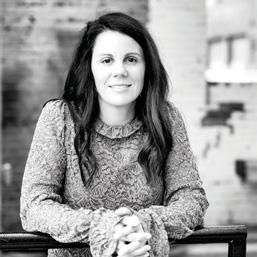
TYLER CUNNINGHAM / PHOTOGRAPHER
Tyler Cunningham harnesses the power of storytelling through her photography to build deep connections between her subjects and the audience. She strives for those connections to forge trust, elicit emotion and allow us to better understand ourselves. “The urban oasis that Dr. Majors and his team have faithfully cultivated is a feast for the senses and a haven for the soul. Capturing their beautiful and purposeful work was an honor and a gift.” Learn more on her website tylercunninghamphotography.com or follow her on social media with @tylercunninghamphotography.
GERRY O'NEILL / ILLUSTRATOR

The youngest of six, Gerry O’Neill always had someone to outdraw, outwit or outrun. With a degree in commercial art, O’Neill worked in Washington, D.C., advertising agencies before striking out as a freelance illustrator. He put down roots in Durham in the ’90s and his love for North Carolina only grows stronger. The state’s landscape has been a compelling muse, which he tries to capture in oil paint. “Each painting or illustration offers me an opportunity to engage with a new place or viewpoint and bring a piece of myself in capturing its essence. Jim Dodson’s writing evokes a sense of wonder and humor to which I’m privileged to bring my own sense of wonder and humor.”
JOE MILLER / WRITER
Joe Miller is an outdoor writer who decided 11 years ago that instead of just telling people where to explore, it might be fun to actually take them. He’s been doing so ever since, through his GetHiking! and GetBackpacking! guide services. He’s written six guidebooks, including 100 Classic Hikes in North Carolina and Backpacking North Carolina. “I love taking people into the woods and seeing how being in the wild improves their perspective.”
 Courtesy contributors; Gerry O'Neill (O'NEILL)
Courtesy contributors; Gerry O'Neill (O'NEILL)
16 | WALTER
FEEDBACK



We love to hear from you! A few recent notes from readers...


On War in Words, which included excerpts from A.C. Snow’s WWII diary...
“It was such a nice article. Thanks to his daughter. ”
Jo Ferguson Garrison
“That was a sweet article. I was friends with his daughter Melinda, who passed away many years ago.”
— Leslie Fox
“Wonderful read. Thanks for sharing.”
— David Lewis
“Moving to The Cypress has enriched my life far more than I expected. Daily I am thankful for the joys of living in this wonderful community, and Bo loves his walks around these beautiful grounds!”


We enjoyed meeting our June cover star, Brie Arthur, along with David and Hannah.

“Some well deserved praise for @ThatStation from David Menconi. Not since the heydays of AOR stations like WQDR & WRDU have any commercial Triangle stations shown this much support for local artists.”
— @guitartowntwang
“Seriously, everything Alimentari does is spot-on! A true Italian deli, right here in Raleigh!”
— @nonssalts
@waltermagazine www.waltermagazine.com
WALTER
421 Fayetteville Street, Suite 104 Raleigh, N.C. 27601
- Mary Boxley
The Art & Soul of Raleigh | 17
Your
today for an appointment.
thecypressofraleigh.com
We along with Mary are sure you will be pleased with plans to visit us and learn why so many others are Let Us Surpass
Expectations! Call
919.518.8907




Managed by SCAN FOR MORE INFO COLLETTA • CRAWFORD BROTHERS STEAKHOUSE • CRU FOOD & WINE BAR DOC B’S • DRAM & DRAUGHT • HONEYSUCKLE GELATO • M SUSHI • SPORTS & SOCIAL THE AGENCY BAR & SOCIAL • SUPERICA • WILLIAMS SONOMA • ARCHER PAPER GOODS ARHAUS • ARULA • ALTAR’D STATE • ATHLETA • BAILEY’S FINE JEWELRY • FREE PEOPLE LULULEMON • MADEWELL • NIKE BY CARY • POTTERY BARN • SEPHORA • SOUTHERN TIDE THE GATORBUG • VESTIQUE • BOARDROOM SALON • CLUB PILATES • FACE FOUNDRIÉ FENTON NAIL BAR • ONE MEDICAL • PARAGON THEATERS • RADIANT WAXING • TRUIST TRUSS VET • VON KEKEL SALON • ZEN NAIL BAR FENTON NC .COM
Fred Myers (ENO FESTT)
OUR TOWN
This month, spend long summer days at outdoor festivals and feasts — or beat the heat with air-conditioned shows.
by ADDIE LADNER and KARA ADAMS
NOTED
Turn your Independence Day weekend into a chance to explore the state with one of these festivals.
OCEAN CITY JAZZ FEST
July 1 - 3 | See website
Check out Gerald Veasley, George Freeman, Jr. and Eric Darius when they perform at the 12th annual Ocean City Jazz Festival in North Topsail Beach, with drinks and snacks available from on-site food trucks.
On July 1, the festival will celebrate its induction to the North Carolina Civil Rights Trail, which commemorates sites around the state vital to the civil rights movement. This area, known as Ocean City, was at one point the only coastal locale in the state where Black Americans could purchase property.
From $75; 2649 Island Drive, North Topsail Beach; oceancityjazzfest.com
ENO FEST

July 2 & 4 | 10 a.m. to 6 p.m.
The 43rd Annual Festival for the Eno, which benefits the Eno River Association’s conservation efforts, features upbeat music on four stages including performances by Molly Sarlé, Blackhaus and H.C. McEntire, as well as a juried craft show with over 75 artists from the Southeast. In addition, there will be activities for kids and concessions from local businesses such as Sweetwater Beer Garden, Vimala’s Curryblossom Cafe, Oak City Fish and Chips, Sarah’s Empanadas and Smitty’s Homemade Ice Cream. From $25; 5101 N. Roxboro Road, Durham; enofest.org
4TH OF JULY IN HIGHLANDS
July 1-4 | See website
A town of a little more than 1,000 residents in the Nantahala National Forest, Highlands will hold a four-day celebration that kicks off on Friday with live music by bluegrass band Silly Ridge Trio in the town square and ends with a fireworks show at Kelsey-Hutchinson Founders Park on Monday. In between, kids can enjoy activities like sack racing, building soda-bottle rockets and getting cooled off by a fire truck hose, along with a hot dog lunch (donations suggested).


Free admission; see website for locations, Highlands; highlandschamber.org
All information is accurate as of press time, but please check waltermagazine.com and the event websites for the latest updates
The Art & Soul of Raleigh | 19
Eno River Fest
DATEBOOK
ARTISAN MINI MARKET
July 1 | 5 - 8 p.m.
Shop from a handful of local artisans and vendors on the patio of State of Beer Bottle + Sandwich Shop on Hillsborough Street for its First Friday event series, presented by Pop-Up Raleigh. Grab a draft beer and order apps like hummus and charcuterie to share with friends at this dog-friendly venue while perusing goods and handmade items from local small businesses. Past vendors have included accessories shop Sissy & Jacks and home items from The Woven Willow. Free; 401 Hillsborough Street; downtownraleigh.org
JULY 4TH CELEBRATION
July 4 | 6 p.m.
Pack a picnic and bring the entire family to the Big Field at Dorothea Dix Park to see the City of Raleigh’s Independence Day fireworks show light up the night sky with colorful displays. Get there early to save a spot — and jam out to live music from a DJ or test your luck in field games such as cornhole and giant Connect Four — before the show begins. Free; 1030 Richardson Drive; dixpark.org
FAMILY PERFORMANCE SERIES
Starting July 9 | See website
From July 9 to August 13, Wake County Public Libraries is offering far more than books at their branches through their Family Performance Series. Playing on the theme of Oceans of Possibilities, the summer lineup includes puppetry by Tarish “Jeghetto” Pipkins, beats by “Drum Prophet” Eugene Taylor, tunes spun by DJ Ed Luva, high-flying acrobatics by Amanda the Aerialist and a bilingual performance from Alina Celeste, all taking place on Saturday and Sunday afternoons at 2 p.m. Free; various locations; wakegov.com/libraries
BRICKUNIVERSE LEGO FAN FESTIVAL
July 9 - 10 | See website
The Raleigh Convention Center is transforming into a sea of mini bricks for “the Ultimate LEGO Fan Experience.”
more nce mmer rish rum spun obatics bilinCeleste, d Sunarious kid

This year, the two-day event will feature a “Star Wars Zone” where kids of all ages can build spaceships, as well as the Big Brick pile, which will hold tons of LEGO Duplos for younger visitors. Meet professional LEGO artists and peruse their creations including mosaics,
BOOK HARVEST SUMMER BLOCK PARTY July 16
| 1-4 p.m.
life-sized sculptures and scaled-down recreations of iconic works of art. Try your hand at a masterpiece of your own at the Building Zone, where thousands of bricks are available to experiment with. From $15; S. Salisbury Street; brickuniverse.com
NOTED

















Load the kids into the car and head to Durham Bulls Athletic Park for a celebration of literature and family-friendly storytelling featuring special guests Pierce Freelon, The Poetry Fox, Man-Man the Mini Horse and writer and equestrian Caitlin Gooch. Take home a free, culturally inclusive children’s book and enjoy free cupcakes and popcorn in celebration of Book Harvest’s 11th birthday. Free; 409 Blackwell Street, Durham; bookharvest.org

THE GREAT DIVORCE
July 9 - 10 | See website
Join C. S. Lewis and his unique characters on a bus ride through the afterlife in an allegorical play based on the 1945 novel of the same name. Follow along as cynical souls such as The Hard-Bitten Ghost and The Intelligent Man journey from hell to heaven, and make a decision in between that proves more difficult than expected. From $49; 2 E. South Street; dukeenergycenterraleigh.com
own at thou expe G Join C. charact afterlife on the 1 Follow a H Intellige heav tw W J l
BANJO HANG WITH HANK SMITH & TRAY WELLINGTON
July 11 | 7 - 8:30 p.m.
Grab your banjo and register for your spot at Harry’s Guitar Shop, where PineCone’s Communications Manager Tray Wellington is joined by Hank Smith of Hank, Pattie & the Current for a Banjo Hang workshop. Learn a new tune, jot down some professional tips and hear Smith and Wellington play together in this intimate, encouraging environment for banjo lovers of all skill levels. $15 suggested donation; 556 Pylon Drive; pinecone.org

THE
CHICKS
& PATTY GRIFFIN
July 12 | 7:30 p.m.
See The Chicks perform songs from their first album in over a decade on their Gaslighter Tour at Coastal Credit Union Music Park at Walnut Creek. Sing along to all the hits The Chicks are known for, including “Wide Open Spaces” and “Cowboy Take Me Away,” as well as new songs. The country trio will be joined by singer-songwriter Patty Griffin, who will play songs from her new album, Tape, along with
Courtesy Book Harvest (POETRY FOX); Getty Images (BANJO)
20 | WALTER
fan favorites like “Heavenly Day” and “Let Him Fly.” From $30; 3801 Rock Quarry Road; concerts.livenation.com
SOUTHEAST
CRAB FEAST
July 16 | See website

Come hungry to Lake Wheeler Park for fresh, all-you-can-eat blue crabs with a side of fish and chips. The traveling SouthEast Crab Feast celebrates the coastal tradition of cooking local seafood outdoors, in a family-friendly atmosphere that transforms Raleigh into the beach for a day. Proceeds go towards nonprofit organizations like St. Jude Children’s Hospital, Susan G Komen Breast Cancer Foundation and the American Cancer Society. From $15; 6404 Lake Wheeler Road; eventbrite.com
MOANA AT DOROTHEA DIX PARK
July 16 | 7 p.m.
Dress up as your favorite superhero or princess and head over to Dorothea Dix Park for a screening of Disney’s family musical Moana at the Big Field. Kids (or adults) can meet movie characters and win a prize for best costume. Bring your chairs, a picnic blanket and some movie munchies to enjoy during the show, or grab something from one of the food trucks on site. Free; 1030 Richardson Drive; dixpark.org
BARENAKED
July 16 | 7 p.m.
LADIES
As part of their Last Summer on Earth North American tour, jam out to
IN CONVERSATION: EDIBLE NORTH CAROLINA


July 21 | 6 - 7:30 p.m.
Hear North Carolina-based culinary stars Shorlette Ammons, Victoria Bouloubasis, KC Hysmith and Ricky Moore discuss the new book Edible North Carolina: A Journey across a State of Flavor at Letters Bookshop in Durham. Part exploration of North Carolina’s food history and culture and part cookbook, it’s filled with essays, photography and recipes that celebrate the diverse food landscape of our state. Grab a copy to have it
signed by the editor and contributing writers after the event. “There could not be a more important time to share the power and culinary vibrancy of North Carolina’s local food movement. Edible North Carolina’s essayists and the people whose voices they bring to the page — several 2022 James Beard Award finalists among them — inspire readers to be informed, healthy, joyful, and activist eaters who celebrate and sustain local and regional food economies for all,” says Marcie Cohen Harris, the food historian who edited the book. Free; 116 W. Main Street, Durham; lettersbookshop.com
1990s rock band Barenaked Ladies at downtown’s Red Hat Amphitheater, where they’ll be joined by alternative rock groups Gin Blossoms and Toad the Wet Sprocket. Expect classics like “If I Had $1,000,000,” which could come in handy if you want to opt in for the Gold Package ticket, which gets you into preshow soundcheck parties and a meet-and-greet. From $38; 500 South McDowell Street; redhatampitheatre.com

SUNSET PADDLE
July 16 & 22 | 7:30 p.m. Hop in a kayak or canoe and enjoy a sweet Carolina sunset from Falls Lake in Durham County. Paddle out to a
prime sunset-viewing location with guides from Frog Hollow Outdoors, then spend a relaxing evening floating among the sights and sounds of aquatic life after dark. Trips are open to paddlers of every skill level, ages 13 and up. Registration closes at noon on the Thursday prior to the trip. $38; Falls Lake, Durham; froghollowoutdoors.com
THE JOY OF SOUL

July 17 | 3 - 7:30 p.m.
Join DJ Thoro at the North Carolina Museum of Art for this month’s installment of NCMA Groove, a summer series celebrating music, joy and people. Jam out in the Museum Park to a wide-
Courtesy The Chicks (THE CHICKS); Bax Miller (FOOD); courtesy Edible North Carolina (BOOK)
The Art & Soul of Raleigh | 21
NOTED
ANDREW BIRD AND IRON & WINE
July 25 | 6 p.m.
Grammy-nominated indie musicians Andrew Bird and Iron & Wine are headed to Cary on their Outside Problems Tour. This triple-header show includes a performance by songwriter and instrumentalist Meshell Ndegeocello. Enjoy the musings of Bird and spirit-lifting tracks like “Such Great Heights” from Iron & Wine’s albums at Cary’s open-air Koka Booth Amphitheatre in the pines. Make it dinner and a show with Koka Booth’s ready-for-pickup “Picnic in the Park” baskets, which include options from local restaurants including Great Harvest Bread Co., Raleigh Picnic Co. and Alpaca Peruvian Charcoal Chicken. $61; 8003 Regency Parkway, Cary; boothamphitheatre.com



ranging set featuring classic soul, R&B, jazz, Afro-Caribbean, Afro-Latinx, neo soul, hip-hop, funk, house and calypso music. Free; 2110 Blue Ridge Road; ncartmuseum.org


favorites like “All Too Well” and “Invisible String” performed by Lyricosa, a Raleigh-based string quartet. The chapel will be illuminated by hundreds of candles, an experience certain to leave you feeling “Enchanted.” From $45; 110 S. East Street; feverup.com



CANDLELIGHT: A TRIBUTE TO TAYLOR SWIFT
July 21 | 6:30 & 9 p.m.
All Saints Chapel on South East Street will transform into something out of your “Wildest Dreams” for a candlelit tribute to Taylor Swift. Hear her biggest hits alongside fan
THE



25TH
ANNUAL PUTNAM COUNTY SPELLING BEE
July 27 - 31 | 7:30 p.m.
PlayMakers’ Summer Youth Conservatory presents the culmination of a six-week practicum for dedicated high school thespians at Paul Green Theatre. Follow the antics of six teenagers competing in a spelling competition in this Tony-award winning musical comedy based on the book by Rachel Sheinkin. From $20; 120 Country Club Road, Chapel Hill; playmakersrep.org
22 | WALTER
DATEBOOK
courtesy Fever (CANDLEIGHT); courtesy Koka Booth (BIRD AND IRON & WINE)
We like to socialize. Follow along and don’t miss a thing. @WalterMagazine waltermagazine.com
NOTED
GALAXYCON RALEIGH



July 28 - 31 | See website Blasting off from the Raleigh Convention Center in 3, 2, 1… An opportunity to suit up in your best cosplay and join fans from across the universe for a four-day celebration of comic books, sci-fi, fantasy and anime. At GalaxyCon, you can connect with people who love your favorite things while attending panels featuring artists, writers, voice actors and creators from (almost) every fandom in the galaxy. Child passes from $10, adult passes from $30; 500 S. Salisbury Street; galaxycon.com
DURHAM BULLS CAMP OUT NIGHTS








July 30 - 31 | 6:35 p.m.
















Watch the Durham Bulls pitch a game, then pitch a tent on the baseball diamond! If you eat, sleep and breathe the Durham Bulls, you can do all three of those things at Camp Out Night, a unique opportunity to sleep over at the Durham Bulls Athletic Park. Fun for the whole family, the Camp Out Package includes a game ticket, a pregame parade, postgame s’mores, a firework show, a camp-out patch and breakfast the next morning. Tickets must be purchased July 26. From $30; 409 Blackwell Street, Durham; milb.com/durham

FREE ADMISSION for Museum Members TICKETS on sale at naturalsciences.org/lifebeforedinos Open thru September 4, 2022 The Art & Soul of Raleigh | 23 Pigfish Lane Antiques & Interiors antiques • porcelain • art old & new • custom framing • carpets lamp shades & repair • custom-built furniture • (919) 436-4006 • • 5425 Hillsborough Street, Raleigh “INTERESTING STUFF” FOR YOUR HOME & COLLECTIONS
Bob Karp (FIELD)



MEET OUR GLOBAL LUXURY SPECIALISTS AT - HPWLuxury.com# 1 IN LUXURY SALES IN THE TRIANGLE More return for your LUXURY INVESTMENT!
TREASURE TROVE
A unique collection at UNC keeps music memorabilia accessible

 by DAVID MENCONI photography by FORREST MASON
by DAVID MENCONI photography by FORREST MASON
When he first arrived at the University of North Carolina at Chapel Hill’s Southern Folklife Collection in 1999, Steven Weiss found himself overwhelmed by all of its holdings: a huge trove of recordings, photos, films and ephemera ranging from a cardboard cutout of Dolly Parton to the contents of the late newsman Charles Kuralt’s office. But what the collection’s new
curator was most drawn to was a literal wall of sound, a line of racks holding about 7,000 mostly ancient vinyl albums covering every style imaginable.
“I used to spend a lot of time just staring at this wall,” Weiss says. “There’s so much here I’d just love to dig into, still, 23 years later. Everything in here represents a world unto itself. So many stories, I never know where to start.”
Nestled on the fourth floor of the Wilson Special Collections Library on the
UNC campus (with an off-campus storage facility in Research Triangle Park to handle the overflow), the Southern Folklife Collection is one of the world’s premier music archives, with artifacts far beyond those thousands of albums. It has somewhere north of a quarter million sound recordings on cassette, reelto-reel and 8-track tape, 78-rpm records, wire recordings and old-style cylinders, plus machines to play them all on. There are also photos, films, Andy Griffith’s
MUSIC The Art & Soul of Raleigh | 25
Steven Weiss, left, and Andy Griffith's guitar.
MUSIC
guitar and the hand-painted recliner from the cover of Southern Culture on the Skids’ 1997 Plastic Seat Sweat album.

More items are coming in all the time, too, enough to keep Weiss and his small staff busy cataloging, sorting and labeling items. One of the collection’s employees is Tatiana Hargreaves, a young graduate student who is also one of her generation’s leading musicians in old-time folk, an active recording artist and a music teacher — the perfect background for pulling together presentations from the archive on legendary elders like Elizabeth Cotten and Ola Belle Reed. “I’ve learned so much,” says Hargreaves. “I’d had some external interactions with archival recordings,
listening to recordings to learn how to play them. But I didn’t know what went on in the background. I feel like I’ve just scratched the surface of the details that go into this work.”
Along with serving as a historical repository, the Southern Folklife Collection is primarily used for research. Closed during the pandemic, it’s currently open by appointment only. But even during the worst of the shutdown, researchers and record companies were making use of its materials — like the 2021 box set from Craft Recordings on folk legend Doc Watson, “Life’s Work: A Retrospective,” which was largely decorated with historical photos pulled from the collection. “The materials they
provided really made all the difference to that project,” says Scott Billington, who co-produced the set. “It was impressive, just how much they had.”
The beginnings of the collection go back to the other side of the world, around 60 years ago. An Australian collector named John Edwards amassed an impressive collection of more than 2,500 American country records before he died in a 1960 car accident, and his will specified that the records be sent to America after his death. The University of California, Los Angeles was the first institution to take in the John Edwards Collection. It stayed there until the late 1980s, when UNC acquired it, combined it with its Folklore Archives, and formed


26 | WALTER
Clockwise from left: Steven Weiss surrounded by the collection; a sample of the record collection; the customized, hand-painted recliner from the cover of Southern Culture on the Skids’ 1997 album Plastic Seat Sweat.
the Southern Folklife Collection.

The archive has grown by leaps and bounds ever since, especially after Weiss’ arrival. Previously, he lived in Washington, D.C., and worked at the National Archives and CNN’s capitol bureau. But his dream job was to run a music archive — “I always wanted to work with music archives, that’s my passion,” he says — and this turned out to be the place.
“There are maybe a dozen or so significant-sized archives in the country that do what we do,” says Jeff Place, curator of the Ralph Rinzler Folklife Archives and Collections at the Smithsonian in Washington. “At this point, the Southern Folklife Collection almost surpasses even the Smithsonian because of the collections Steve has brought in over the years. He’s amassed a real who’s-who of the greatest figures of American vernacular music producers and collectors.”
You’ll find treasures like legendary Atlantic Records producer Jerry Wexler’s


record collection, the archives of the founders of the bluegrass label Rounder Records and the far-flung recordings and films of folklorist William R. Ferris. The Southern Folklife Collection helped archival label Dust-to-Digital Recordings on a 2018 Ferris box set, “Voices of Mississippi: Artists and Musicians Documented by William Ferris,” which won two Grammy awards. Another Ferris box set is in the works, compiling his films of blues artists from Mississippi.
Ferris is one of the leading folklorists in the field and could have placed his archive at any museum in the country. He chose the Southern Folklife Collection because it agreed to digitize his recordings and films to make them available online, a project that will take years.
“That’s become more of a priority over being a dusty mothball archive where people just come to do research to write their books,” says Weiss. “It’s more active and fluid than that.”


Another priority of recent years has been to bring the collection out into the world with more public programming, since it’s not open to the public. This past spring, for example, UNC and Southern Folklife Collection presented a “Voices of Mississippi” concert centered on music from the Ferris box set.
The work has not gone unnoticed among collectors, scholars, and musicians looking for final destinations to house their collections permanently. David Grisman, a renowned folk-jazz mandolinist, recently bequeathed his personal archive to the Southern Folklife Collection. Billington, who has won three Grammys over the years while producing a long string of classic Louisiana and New Orleans artists, plans to donate his work to the archives, too.
“To not have it just stuck in a box somewhere and actually available for use and research online is a pretty amazing thing,” says Billington.


The Art & Soul of Raleigh | 27 Make a Statement Diamonds, Estate and Antique Jewelry • Loose Diamonds of all Shapes and Sizes • Certified Appraisals • Expert Jewelry Repairs WE BUY DIAMONDS, GOLD AND PLATINUM 345 S. WILMINGTON STREET • 919.832.3461 • RELIABLE JEWELRY.COM

or me, summer nights bring fond memories of stargazing, hanging out with friends and moth-watching. Wait… what? That’s right, observing the amazing variety of insects, especially moths, that are most active at night is a favorite warm-weather activity. Several times each summer, we have a few friends over for drinks and snacks on the porch or out by the campfire, set out a moth light (more on this later) and wait to see what comes.
Moths are related to butterflies, but they differ from their better-known cousins in many respects, though it’s sometimes difficult to be certain which is which. Most moths fly at night (we do have some common day-flying moths in our area, like the Hummingbird Clearwing). Moth antennae are either tapered or feathered in shape, whereas butterflies have knobs or hooks at the tips of theirs. And many moths have a “hairy” body, while a butterfly’s body tends to be leaner and smoother. Though more common than butterflies, moths are an often misunderstood and underappreciated group of insects, in part because most of us don’t spend a lot of time outdoors after dark. But these members of the night shift are a fascinating and beautiful part of our natural neighborhood.



When I started working at the North Carolina Museum of Natural Sciences, I used caterpillars as a way to engage students and teachers in the wonders of the natural world. To make sure I had something charismatic to show my groups, I raised Luna Moth larvae at home, in our guest bathtub. They are a great species for teaching as they are large enough to observe, and they eat sweet gum leaves, a common plant, so I could easily find enough food for these very hungry caterpillars. Plus, Luna Moths are often the one species that many people know because they are big and beautiful, with their signature key lime-green wings and long tails. Most people are surprised to learn that these and other giant silk moths have nonfunctional mouth parts and live only one to two weeks as adults.

After dark, moths emerge in their many forms and colors
and photographs
FNATURE The Art & Soul of Raleigh | 29
the NIGHT SHIFT
words
by MIKE DUNN
Spring Beauty
clockwise from top left: bloodroot flowers; Round-lobed Hepatica; windflower; trout lily
Clockwise from top left: Hummingbird Clearwing, Luna Moth, Rosy Maple Moth, Pandorus Sphinx.
NATURE
Their sole purpose in life is to find a mate and reproduce. Females attract males by releasing pheromones; the males pick up the scent with chemoreceptors in their large, feather-shaped antennae. They can detect pheromones from a mile or more away and find their way to a receptive female. The female will then lay eggs on a suitable host plant and the cycle begins anew.
My early fascination with caterpillars eventually led me to an interest in their adult form, butterflies and moths, but I found identifying moths to be challenging. For one thing, there are just so many species, and many look pretty similar. In North Carolina, 177 species of butterflies have been recorded. Compare that to the 2,962 species (and counting) of moths that have been recorded thus far. When I first started, it was much easier to find

good field guides on butterflies. Now, there are more good resources for moth enthusiasts. Some of my favorites include: Peterson Field Guide to Moths of Southeastern North America, BugGuide (bugguide. net), the North Carolina Biodiversity Project (nc-biodiversity.com) and two free apps, Leps by Fieldguide and Seek by iNaturalist.







Moths are commonly seen around your windows or porch lights at night. If you want to get more serious, you can buy an inexpensive black light that projects light in the ultraviolet spectrum. We periodi-


cally set ours outside next to a suspended white sheet. This really draws in the moths as well as other night-flying insects. Alternatively, some moths are best attracted with homemade sugar-based baits, usually involving some combination like an overripe banana, brown sugar and some cheap beer (there seems to be a connection between beer and moth-watching). Let that mixture set for a day or two, then either brush it on a tree trunk or soak a section of rope in it and hang it between two trees. Moth “sugaring” will bring in species that tend to feed on tree sap or flower nectar. Having a diversity of native plants is another sure way to attract a variety of moths. Light-colored and fragrant flowers attract the adults that seek nectar. Plants that provide food for caterpillars will help attract adult moths who are searching for egg-laying sites.
The North Carolina Botanical Garden in Chapel Hill is one of the premier
30 | WALTER es i s m h t more away i f s ng oreceper-shaped ect moreaway
919.424.2115 | colorfulconceptsinteriordesign.com Let us create one-of-a-kind spaces for you that make your heart and mind soar on a daily basis. T i me le s s • • S ou l f u l • • S a nc t u a r y Stacey Van Berkel Photography
Cecropia Moth, North America's largest species
native plant gardens in the Southeast, which means it is also home to an amazing number of animal species that rely on those plants, including moths. When I worked there, I walked around the breezeways every morning before work, checking the walls for moths that were attracted to the building lights overnight. I was amazed at the variations in size, shape and color — people think that moths are drab compared to butterflies, but many are quite beautiful. Some of my favorites include the stunning pink-and-yellow Rosy Maple Moth; the plume moth, which looks like a tiny toy glider; the beautiful green Emerald Moth; the Cecropia Moth, the largest moth in North America with a wingspan of up to 7 inches; and the Sphinx Moth, the jet fighter of the moth world, a rapid flyer with swept-back wings. And there are so many others that are fascinating to see anytime we go mothing.

If I’ve convinced you that moths are worthy of your attention beyond being an excuse for a beer with friends, you can also participate in National Moth Week events in our area. This year, the 11th annual National Moth Week begins on July 23. It began as a moth night in New Jersey and is now an international citizen science project. Mothing events are happening in all 50 states and in 80 countries worldwide, including a Mothing for Science! program at the Prairie Ridge Ecostation the evening of July 23 (naturalsciences.org for more info). Most mothing events are great, kid-friendly ways to learn from local experts and see a bounty of beautiful moths.
















A black light on a sheet attracts moths. EVERYONE LOVES SHOES FROM MAIN & TAYLOR Shop Online at: mainandtaylorshoes.com North Hills 919.821.1556 SALE VSSS stay current on the best in art, culture, food and fun SUBSCRIBE to our newsletter n



WINERIES • BREWERIES • CASUAL & FINE DINING GALLERIES • BOUTIQUES • THEATER • COMFY LODGING BannerElk.com Escape. Unwind. Indulge.
by KATHERINE SNOW SMITH photography by JOSHUA STEADMAN
It was an unusually cold, damp day for an early spring wedding in Raleigh in the late 1980s. The legs of the tables were sinking into the yard. The ganache had frozen on the strawberries. The bride and her mother were quite worried it would rain. Little did they know that a legend was about to be introduced in their yard.
“The mother of the bride asked us if we could make a ham roll. She said she wanted it to be a little sweet and we took it from there,” says Kathie Walton, one of the caterers.
She and her business partner, Caroline Stone, came up with a yeast roll filled with shaved ham, butter and a little brown sugar. The ham rolls were the hit of the reception — and soon became the most popular delicacy made by Ladyfingers, their catering company. If you’ve been to a baby shower, tailgate party or funeral in Raleigh, there’s a good chance these ham rolls have left a little butter on your fingers.

ART WITH A SIDE OF CHICKEN SALAD Ladyfingers’ roots trace back to the opening of the North Carolina Museum of Art’s East Building in 1983. Stone was on a committee and helped bring potluck lunches for various meetings, since there was no place to prepare food at the museum at the time. Her meals were so popular — and the group planning was so unwieldy — that it soon became easier for her to just bring all the components of a light lunch. When the new facility opened and busloads of patrons came from across the state and beyond, the museum asked if she could cater its lunches.
Stone called Walton, a friend and former home economics teacher, to see if she wanted to help out. “We both enjoyed making food and read all the food magazines and collected recipes. It was fun and we wanted to make a little more money,” Stone recalls. “We would make 50 lunches at a time, put them in peach baskets and deliver them to the museum.”
on a ROLL For nearly 40 years, Ladyfingers has offered culinary comfort
FOOD The Art & Soul of Raleigh | 33
Ladyfingers’ famous ham biscuits
FOOD

At the time, the museum had nothing but a sink on the wall in the basement, so the two made everything in their kitchens. Their standard menu was tarragon chicken salad, black bean salad or a pasta salad, fresh fruit and a brownie or cookie. Simple, yet still elegant and distinctive, packed in a peach basket for
Triangle weekly, came up with the name Ladyfingers, because the food was made by… ladies’ fingers. “One thing led to another and it just got busier and busier. We were so excited we didn’t know what to do,” Walton says.
Within a couple years, the women leased a former pizza parlor on E. Whita-
$5,000 each. “We thought we’d risk losing the money. We were both single moms. We didn’t buy anything we didn’t have to,” Walton says. “We used all of our own things for parties, like our own silver platters and serving plates.”
The women paid $75 for a used refrigerator to add to the existing stove and sink on the wall in this little space, where they worked long days and nights. “We wouldn’t turn down anything, even on Sundays. We always felt like one of us needed to be at every event,” Stone recalls. “From the outside, it looks like a glamorous business. But you wear every hat. We took out the trash, we washed the dishes, we broke down the tables.”
As they grew, they enlisted people of all ages and backgrounds to work in the storefront, the kitchen and at parties. “It feels like almost everybody in the city of Raleigh has worked here,” says Stone. “All of our children have worked here, coming in after school making ham rolls, chopping broccoli, delivering box lunches.” Her son, B. Reeves, remembers fondly the days of working at Ladyfingers with his brother Dan and Walton’s daughters, Kate and Alice: “We grew up there like two brothers and two sisters. We would assemble the box lunches, make the ham biscuits.” The kids would accompany their moms on deliveries and on site, sometimes with disastrous results. “My mom had a wood-paneled Oldsmobile station wagon and a shrimp casserole spilled in it on the way to a party,” says Reeves. “That car smelled so bad we called it the Barf Mobile until she finally got rid of it.”
NEW HANDS
a fun Southern touch.
After a couple years with the museum, word spread and the women were asked to cater bridal showers, birthday dinners and other gatherings. Stone’s first husband, Bernie Reeves, the late publisher of The Spectator, a now-defunct
ker Mill Road to upgrade to a commercial kitchen that could be inspected by the health department. There, they could create food for catered events and sell a few to-go items. By this time, they were both divorced and decided the most they could afford to invest in the business was
Stone left the business in 1994 after getting remarried and traveling more with her husband. Walton continued operating Ladyfingers on her own for a few years until she sold it to a longtime employee, Tudi Jackson, in 2013.
“I’d already worked in hospitality in hotels and restaurants and ran a catering company in Charleston before this,” Jackson says. “When Kathie was ready to retire, it seemed a natural evolution


“From the outside, it looks like a glamorous business. But you wear every hat. We took out the trash, we washed the dishes, we broke down the tables.” — Kathie Walton
34 | WALTER
Clockwise from top: Deviled eggs, Caroline Stone and Kathie Walton, chicken salad sandwich.
to take over.” Jackson had started with Ladyfingers in the 1990s as a part-time server for events, and by 2002 had been elevated to catering manager, event coordinator and office manager. She was invested in the business and in Raleigh. “All my ancestors are from Raleigh, so a lot of people either knew me or knew my mom or grandparents,” says Jackson. “We wanted to continue the tradition and the legacy Ladyfingers had built.”
Jackson bought the business with her husband, David, and his father, Dan. At the time, the men expected to be supportive but silent partners. Then David, a civil engineer, was asked by his employer to oversee a huge project in Virginia that would have him traveling back and forth to Raleigh for several years. “We decided that was not the lifestyle we wanted. We had just gotten married the previous year,” David says. Soon, he was a Ladyfingers employee.
David worked on getting the wholesale business going, as he recognized a growing demand for their food outside of Raleigh. “I’d witnessed people driving from Greensboro, Charlotte and the beach during the holidays to buy ham rolls and casseroles,” he says. “I started calling stores we thought would be a good fit to carry our top sellers.” As the wholesale business grew, his twin brother Daniel came on as sales and operations manager. And as of 2018, their father is the pie maker. “Dan started out making a key lime pie because we didn’t have one,” Tudi says. “Now he’s making all our pies. Probably 100 a week.”
Ladyfingers ham rolls and other signature dishes are now sold at 165 individual retail stores from Delaware to Mississippi. And a 4,500-square-foot Ladyfingers Market and Eatery recently opened at Glenwood Place, the new 40acre retail, residential and office community. Here, the counter service menu offers an array of sandwiches (all named for various roads and neighborhoods in Raleigh) as well several as salads and desserts. Tables have seating for about 45 diners with more room at the fullservice bar and on the patio.
Glass freezer doors line one long wall, where customers can choose from about 25 frozen entrees including tomatoand-cheddar pie, chicken enchiladas, chicken-and-rice casserole and tomato bisque soup. The shop also stocks staples such as soft drinks, beer and wine, as well as distinctive gifts and prepackaged gourmet foods.
“About half the stuff we produce ourselves and the other half is mostly made in North Carolina. We look for products you can’t get anywhere else in Raleigh,” Tudi says. The Jacksons want Ladyfingers’ first restaurant space to be more than just a place to eat and pick up meals to take home.
“We want this to be a meeting space for not only this neighborhood but the Raleigh community,” says Tudi. “We have brunch on Saturdays and Sundays. We’ve had live music. Trivia on Tuesday night. Book clubs, Bible studies and

work groups are meeting here.” And just like Watson and Stone, the Jackson family has nephews and cousins, from high-school age and up, working at the Glenwood Place market, in addition to the original Whitaker Mill Road to-go shop and a production facility on Departure Drive.

Tudi and David are pleased that the company’s success creates jobs (which they didn’t cut even in the worst of the pandemic), and that they’ve expanded Ladyfingers’ to-go sales well beyond Raleigh and North Carolina. But their main goal is staying true to the Ladyfingers tradition: providing delicious food and taking the worry of entertaining off the minds of people who are gathering for any reason, small or big. “At a funeral, I want people to be able to focus on their family and not worry if there are still deviled eggs on the table,” says Tudi.

The Art & Soul of Raleigh | 35
Clockwise from top: Tudi and David Jackson, avocado bagel and key lime pie.














































PAN HARMONIA - AUGUST 28, 2022 SERAPH BRASS - SEPTEMBER 11, 2022 AMERNET STRING QUARTET - OCT 23, 2022 IMANI WINDS - FEB 26, 2023 HELIOS PIANO TRIO - MAR 12, 2023 PUBLIQUARTET - APRIL 2, 2023 HARP DIALOGUES - APRIL 30, 2023 *MARK O'CONNOR DUO - MAY 14, 2023 $ 1 6 5 $165 N I N E NINE C O N C E R T S CONCERTS S E A S O N 8 1 SEASON 81 S U B S C R I P T I O N SUBSCRIPTIONSS EXPLORE SEASON 81 INCLUDES: (919) 821-2030Kaine@ChamberMusicRaleigh.orgwww.ChamberMusicRaleigh.org NORTH CAROLINA MUSEUM OF ART SUNDAYS 1:00 & 3:00 SPECIAL MOTHER'S DAY @ THE MUSEUM MERZ PIANO TRIO - MAY 21, 2023 CIOMPI QUARTET - JUNE 11, 2023 BUILDING EAST $ 1 8 7 N O N - M E M B E R S $187 NON-MEMBERS
PACK a POLE!
Five nearby hikes that offer spots to go fishing
by JOE MILLER
Hiking and fishing go hand in hand — sometimes, a long walk in the woods is the only way to access a secret pool of crappie and catfish at trail’s end. And while hiking has assumed a recreational life of its own (especially in recent years, when regional and national parks saw more traffic than ever before due to the pandemic), intertwining the two is, in my opinion, one of the best ways to escape and relax.
Fortunately, there are a few spots in the Triangle where you can both hike and fish, and enjoy them together or separately. One note: For the type of fishing we’re talking about here — defined as State Inland Fishing by the North Carolina Wildlife Resources Commission — you’ll need a license: an annual pass in North Carolina is $25 (you can purchase one online at ncwildlife.org).
Now grab your hiking boots, rod and tackle box, and go!
WILLIAM B. UMSTEAD STATE PARK , REEDY CREEK ENTRANCE, CARY
Fishing: Crabtree Creek

Hiking: Company Mill Trail
Company Mill Trail is the most popular trail in one of North Carolina’s most popular state parks. At least, it is for the first mile, over three ridges down to Crabtree Creek, where many folks turn around for a short out-and-back. There, the breached mill dam forms a pool where you drop a line. As you wait for a crappie, brim or bass to bite, contemplate
EXPLORE The Art & Soul of Raleigh | 37
Getty Images
EXPLORE
the lively social scene that took place here more than a century and a half ago, when the mill would transform into a dance hall on Saturday nights. For a longer hike, cross the footbridge over Crabtree Creek and the 4-mile loop offers a look at how farmland that’s been fallow for nearly 100 years is gradually turning back into woods. Look closely for signs of old roadbeds, rock foundations and the remains of a Boy Scout camp that served the area around 1930.
Getting there: 2100 N. Harrison Avenue, Cary
NEUSE RIVER AT FALLS LAKE DAM, WAKE FOREST
Fishing: Neuse River
Hiking: Mountains-to-Sea Trail
Below the dam tailrace, the Neuse River pours over a rock garden that’s long been targeted for a whitewater paddling park. Among fly fishermen, though, it’s known as one of the ideal spots around to land a brim. “Some of the best fly fishing guides in the state have started here,” says Austin Hill, a Raleigh-based hunting and fishing guide and outdoor writer. The

open space creates room to cast, while the preponderance of boulders creates eddies offering brim, perch and crappie shelter from the current — and a place to sit for lunch. Meanwhile, the Mountains-to-Sea Trail’s eastern terminus along Falls Lake climbs up to the Visitor Center (there’s also a bypass), then settles into the trail’s familiar pattern of ducking in and out of coves along the lake.
Getting there: Falls of Neuse Canoe Launch, 12101 Old Falls of Neuse Road, Wake Forest. For fishing, make your way upstream; for hiking, catch the MST on the north end of the parking lot and hike west (or head east on a paved trail, where the MST piggybacks on the Neuse River Greenway).
JORDAN LAKE EDUCATIONAL STATE FOREST, CHAPEL HILL
Fishing: Jordan Lake Hiking: 3.5 miles on four loop trails
Considering that Jordan Lake covers nearly 47,000 acres, there’s surprisingly little hiking along its 180 miles of shoreline. It might also be surprising that the best hiking isn’t within the massive Jordan Lake State Recreation Area,
but rather in the 900-acre Jordan Lake Educational State Forest along the lake’s western shore. There, four loop trails explore a variety of terrain, from wetlands to the lake to forests in various stages of development. The Forest Demonstration Trail (2.2 miles), Talking Tree Trail (0.5 miles) and the Low Lands Trail (0.5 miles) all snuggle up to the lake at some point, where you can try your luck at catching crappie, largemouth bass and catfish. There’s also a small pond a short distance from the parking area. Note that the Educational State Forest has different (and slightly quirky) hours than the State Recreation Area, so call ahead (919-542-1154) before heading out. Getting there: 2832 Big Woods Road, Chapel Hill.
ELLERBEE CREEK AT FALLS LAKE, DURHAM
Fishing: Ellerbee Creek Hiking: The MST, both east and west, from Red Mill Road Romantic notions of the classic Southern fishing experience are dispelled at this stretch of crappie-happy Ellerbee Creek: finding a good spot here takes work. From the Red Mill Road Access at the Ellerbee Creek bridge, follow the MST downstream from either side of the bridge and watch for small “fishermen’s paths” darting through the dense understory toward the creek. You may get spit out onto a small beach, or you may find yourself on a bank 5 feet above the water. For hikers, the MST is easier to follow. For a short hike, take DayHike Section R on the south side of the bridge 1.1 miles through wetlands, past a massive man-made mountain (“Mount Fogleman”), and along a sizable farm pond to the Redwood Road/Tom Clark Access; for a longer ramble take DayHike Section S on the north side of the creek for 4.8 miles through meadows, wetlands, past abandoned railroad trestles and barns, and along the lake. Getting there: Red Mill Road at Ellerbee Creek, a mile north of Interstate 85.
38 | WALTER
New Hope Creek in Duke Forest
Joe Miller
HOLLOW ROCK NATURE PARK/ DUKE FOREST, DURHAM
Fishing: New Hope Creek
Hiking: Hollow Rock Nature Park/Duke Forest Korstian Division
Over the course of several years, cryptic conversations with a fly guide friend yielded only key descriptors about this spot, including “Durham,” “bluffs,” “overhangs” and “deep pools.” One day, hiking New Hope Creek upstream from Hollow Rock into the adjoining Duke Forest, I stopped atop a rock outcrop and had an “A-ha!” moment. (“So this is the place Jim’s been telling me about.” Shortly after passing under Erwin Road, the creek cuts deep into bluffs rising 30 feet, forming deep, dark pools where brim and crappie are reported to reside. Getting to these holes is half the fun; the trail along New Hope is surprisingly wild, with rocky passages, tributary crossings and a climb up 446-foot Piney Mountain before hitting an impressive
— for the Piedmont — cascade.
Getting there: Hollow Rock Nature Park, 692 Erwin Road, Durham (from the west

end of the parking lot, take the Hanging Rock Loop Trail to the Duke Forest Access Trail and hike upstream).

The Art & Soul of Raleigh | 39
Jordan Lake
Carla Hendrix
swim.
When life gets you down, take a plunge
When down, a





Wells Beach, Maine, at 10 a.m. was too quiet.
I should’ve been in New York City, working at the publishing house that offered me an internship back in March. I should’ve been waking up at 7 a.m. to shower and put on business casual, catching the subway.
I would’ve been there if it weren’t for a round of budget cuts. A week before I was going to start, they told me I had no job. I would’ve been thinking about where to go dancing and meeting with my new friends for coffee. I would’ve been wearing heels and eating lunch in Washington Square to a chorus of street performers and car horns.
But instead, I woke up in the back of my 2014 Jeep Wrangler, surrounded by a month’s worth of camping supplies and about five days’ worth of clothes. Everything was damp from the conden-
EMILY GAJDA JILLIAN OHL
by illustration by OHL



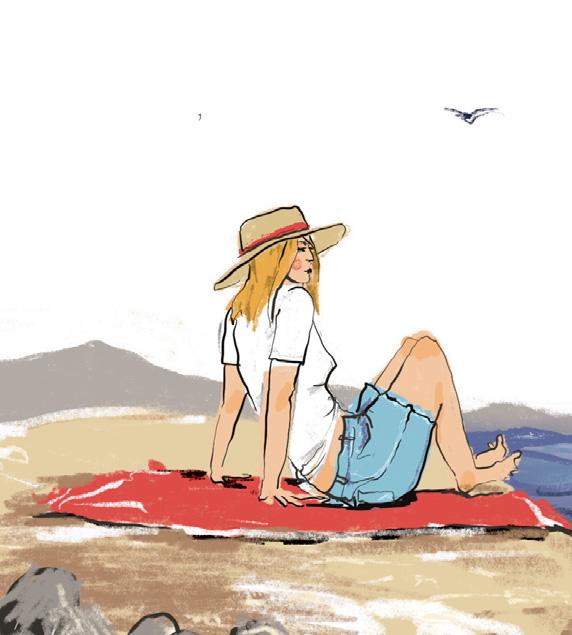
sation that had collected in the car while I was asleep. The air smelled just a little bit like salt water and mildew. The only noises were a few birds chirping and a weathered older man walking around the parking lot, reminding stragglers that campsite check-out was at 9:30. He looked kind, though, and his tone wasn’t nagging — it had a hint of sympathy. I asked him if I could shower quickly before leaving, and he told me that the bathhouse had closed for cleaning. Even if he wanted to let me in before I left, he couldn’t. I hadn’t even brushed my teeth yet. I wouldn’t have a bathhouse for three or four more days as I camped my way further up the coast.
“Why don’t you go for a swim?” he said. “In my experience, Atlantic salt water does the job.”
I smiled, thanked him for the suggestion, and decided that what I actually needed was a cappuccino.
The only coffee shop in Wells Beach was a few minutes’ drive away. I ordered my cappuccino with skim milk. The woman looked at me a little funny.
Maybe it was because I smelled bad. I had been camping in my car for a week, moving slowly north from Chapel Hill, taking gas station sink showers with hand soap and a washcloth. Or it could have been because I was alone. Wells Beach is small — tourists usually come in groups, and residents know each others’ names. Likely, it was a combination of both.
“How are you doing this morning?”

“Can’t complain. Maine is beautiful.”
At her request, I explained what I was doing up there all alone. I’m sure it came off a little resentful and very convoluted. It’s hard to explain to someone how a 21-year-old girl ended up choosing to sleep in a car for a month. It’s even harder when it was a trip planned in a matter of days, and when you don’t even really
40 | WALTER
NOTED
ellsBeachMaineat sationthathadcollectedinthecarhile TheonlcoffeeshopinWellsBeach
know why you’re doing it either. She could tell I was frazzled.
“Go to the beach, it’s a nice place to think. Take a swim, clear your mind.”
I smiled again before I left, feeling guilty as I thanked her for suggesting a solution that I couldn’t imagine using. My comfort zone did not encompass the Atlantic Ocean, even after the cappuccino.
As I drove east, my dad called. I told him maybe too much about how bad my car smelled, how nothing ever dried completely. I talked about the man at the campsite, how he seemed familiar in a way I couldn’t quite explain. I talked about the woman in the coffee shop and how I rambled on while she gave me a kind of smile that said she understood it all. I laughed toward the end of the call and said two people that morning had already told me to swim.
He chuckled at me and asked, “why
don’t you?” But he already knew: I had been scared of the ocean ever since I was a kid. Likely a product of never spending much time at the beach, my rather petite stature (it’s just so big!) or my general fear of the unknown.
“You’re alone, camping up and down the Eastern Seaboard — taking a dip in the ocean is where you draw the line?”
I was still laughing as we said goodbye. By the time we hung up, I was somehow parked at a beach access. I slipped on a bikini in the back of my car, dug a damp towel out from an old duffel bag and laid it on the bumper in the sun.


Then, seemingly without ever making the decision at all, I was in the water. It was impossibly cold. That man and that woman did not tell me the damn ocean temperature would only be 60 degrees.
But they were right about everything else. I washed the soot and sweat off as the waves moved my hair around my

shoulders; I submerged my body in the liquid chill and my mind was clear for the first time, maybe ever. I felt everything: a breeze above me, grains of sand between my toes, seaweed dancing in the water.
The cold that touched every square millimeter of my body woke me up more than any stimulant I’d ever tried. As the vastness of the Atlantic surrounded me, I knew I was supposed to be there — immersed in the quiet, salty water and air instead of being swallowed by crowds, buildings and sirens. I stayed in the water for as long as I could stand it, which happened to be about four and a half minutes.
That sun-warmed towel felt like home when I pulled it off the bumper to wrap it around my shoulders. It was like remembering who I was for the first time in a very long time.
The Art & Soul of Raleigh | 41
Emily Gajda is a senior at the University of North Carolina at Chapel Hill.
knohou’redoingiteitherShe don’tou?” ButhealreadkneIhad shouldersIsubmergedmbodinthe
Ihave a friend who never fails to show up at cocktail time. Wherever he’s been, whatever he’s been up to all day, he appears like clockwork as I settle into my favorite Adirondack chair to enjoy a sip of fine bourbon and observe the passing scenes of evening life.

Fortunately, he doesn’t drink bourbon. He doesn’t do much of anything, near as I can tell, except annoy the dogs and pester me well before dawn for his breakfast after a night out carousing. Then he snoozes all day on the bed in our sunny spare room, like a house guest who won’t leave.
We call him Boo Radley, after the peculiar character who saves Scout Finch in To Kill a Mockingbird. Our Boo, an old, gray tomcat who would rather watch birds than chase them, hasn’t caught a bird of any sort in years.
But at cocktail hour, rain or shine, you can set your watch by Boo’s punctuality. He’ll hop up on the arm of my chair and help me watch the birds at the feeders, though Boo is too old to bother trying to catch them. Even in his salad days he was never much of a killer, though he would leave the occasional mouse on a discreet
The Cocktail Cat
The spirit of a roaming feline
by JIM DODSON
illustration GERRY O’NEILL
lower step of our back porch.
Like his namesake, Boo’s a friendly fellow once he gets to know you, though he generally doesn’t cotton to strangers. We’re half-convinced several folks in the neighborhood are feeding him, because he’s beginning to resemble a bowling pin. Perhaps he has them fooled into believing that he’s actually homeless. Nothing is further from the truth. He’s managed to ditch every expensive collar and bell we’ve put on him over the past 10 years in order to keep his dining ruse going.
In fact, Boo Radley has had at least three very nice homes. The first was in Southern Pines when No. 2 Son brought him home on a cold winter evening. He was just a gray foundling you could hold in the palm of your hand, a little cuss who appeared half-starved and very grateful.
Second Son named him “Nikko,” which means “daylight” in Japanese, and planned to take him off to Boston, where his new job in the hospitality industry awaited. His mom wisely interceded, pointing out that the last place a homeless kitten needed to live was with a single career guy working long and impossible hours.
So we inherited Nikko. The first thing I did was give him a new name. He seemed to like the name Boo Radley, though who can ever say what a cat is really thinking.
I suppose that’s part of his peculiar feline charm. Dogs occupy space, someone said. Cats occupy time. They act like you’re on this planet to serve them and should be grateful to do so. Another friend with several cats informs me that cats know the secret of the universe. They just won’t tell.
During our many years in Maine, we had a succession of barn cats that wormed their way into our affections. A lifelong dog lover who occupies more space than time, even I came to admire their independence and pluck, somehow surviving the fierce Maine winters and coyotes.
Boo grew up with our three dogs, sometimes sleeping with them, often stealing their food, giving them a passing swat now and then as a friendly reminder of who was really in charge. Bringing up Boo was like raising a problem child.
We eventually moved to a house that had 2 acres of overgrown gardens. Boo didn’t miss a beat. He was always out in the garden, night and day, either following
42 | WALTER SIMPLE LIFE
me around or snoozing in the shade on hot summer afternoons.
One evening around dusk, I saw Boo sprint across the yard, chased by a young gray fox. Moments later, I saw the fox run the opposite way, chased by Boo Radley. This game of cat-and-fox tag went on for weeks. Nature always surprises you.
Not long after that, we moved to the Piedmont city where I grew up and Boo found a new pal in the neighborhood: a large, brown, wild rabbit that comes out every evening to feed on clover and seeds from our busy bird feeders.
I named him Homer after the author of the epic Greek poem about a fellow who wanders for 10 years trying to get home. Our Homer seems very much at home in our yard, keeping a burrow beneath my hydrangea hedge.
Boo is highly territorial about our yard — woe to any other cat that sets foot on the property — but has no issue whatsoever about sharing space with a large,
wild rabbit. I’ve seen the two nose-tonose many times over the years.
Such are so many sweet mysteries in this world that we cannot explain. But maybe we don’t always need to. Perhaps it’s enough to simply notice them.
In his splendid essay “A Philosopher Needs a Cat,” New York University religion professor James Carse writes: “It is not accidental that the word animal comes from the Latin anima, soul. The primitive practice of representing the gods as animals may not be so primitive after all. Soul is not only the small ‘still point of the Tao’ where there is no more separation between ‘this’ and ‘that,’ it is also the presence of the unutterable within.”
A mystic would probably say it’s enough to simply pay attention as different worlds intersect when we least expect it, revealing the presence of the unutterable within. I have no idea what Boo Radley would say about such matters,

being a cat of few — or actually no — words. He’s not one for small talk.
But after so many years and miles together in each other’s company, it’s enough that Cocktail Cat never fails to sit with me as the evening fades, season after season, displaying the kind of timeless tolerance and spiritual detachment a Buddhist monk might envy. Boo is perfectly companionable while betraying absolutely no opinion on — or apparent interest in — the trivial matters I present to him as we watch birds feed and I sip my bourbon. At the end of the day, there doesn’t seem to be much separation between his “this” and my “that.”
It also occurs that maybe I have the philosophical proposition backwards. Perhaps this aging, well-traveled tom cat simply needs an armchair philosopher to sit with in silence at the end of the day.
Only the Cocktail Cat knows for sure, and he ain’t telling, a perfect presence of the unutterable within.
The Art & Soul of Raleigh | 43
Which Direction Are You Looking?
Your wealth is about your future. Be sure your financial plan is, too.
Life only moves in one direction: Forward. And that’s the same perspective you should bring to your money. At First Citizens Wealth Management, we’re a family-led financial company. And we bring a family sensibility to every decision we make ... always thinking forward and working to help clients understand where they want to go. And how we can help them get there. First Citizens Wealth Management. Forever First.®

firstcitizens.com/wealth
Your investments in securities, annuities and insurance are not insured by the FDIC or any other federal government agency and may lose value. They are not a deposit or other obligation of, or guaranteed by any bank or bank affiliate and are subject to investment risks, including possible loss of the principal amount i nvested. Past performance does not guarantee future results.


First Citizens Wealth Management is a registered trademark of First Citizens BancShares, Inc. First Citizens Wealth Management products and services are offered by First-Citizens Bank & Trust Company, Member FDIC; First Citizens Investor Services, Inc., Member FINRA/SIPC, an SEC-registered broker-dealer and investment advisor; and First Citizens Asset Management, Inc., an SECregistered investment advisor.

Brokerage and investment advisory services are offered through First Citizens Investor Services, Inc., Member FINRA/SIPC. First Citizens Asset Management, Inc. provides investment advisory services. Bank deposit products are offered by First Citizens Bank, Member FDIC. INVESTMENTS | INSURANCE | RETIREMENT
Evensong
 by JOSEPH BATHANTI
by JOSEPH BATHANTI
At opposite ends of the feeder, dangling from the buckeye by a sliver of jute, a cardinal and indigo bunting feed, seemingly oblivious to the blue and scarlet other, their self-absorption an ongoing evolutionary tick completed this very instant.


Birdseed falls into the tall grass under the tree. The cardinal flies off, upsetting the feeder’s ballast. It sways, wildly at first, then less and then less until less, like a hypnotist’s gold watch, while the bunting, fading by degrees into the falling blue spell of evening remains perfectly still.
illustration by ANGELA LOMBARDI

The Art & Soul of Raleigh | 45
ROOTED IN CLAY
 by COLONY LITTLE photography by TAYLOR MCDONALD
by COLONY LITTLE photography by TAYLOR MCDONALD
46 | WALTER
Through her art, Laura Casas creates the world that she wants to see

The
&
of Raleigh | 47
Art
Soul
or Laura Casas, clay is a form of discovery. In a storefront studio on Glenwood Avenue, this artist brings new life to mud and dirt. There, Casas can be found gently rolling red clay by hand, pulling and forming it into pots, vases, mugs and bowls. These vessels become a canvas for storytelling: On this earthenware landscape, Casas might paint a character lounging in grass gazing up at fluffy clouds, or vibrant rainbows and stars that play harmoniously with the sun and moon. With her hands and through her day job, Casas is shaping the world she wants to see.
Casas grew up in the rural community of Columbia in eastern North Carolina. When her elementary school lost its arts funding, her mother enrolled her in the Pocosin Arts School of Fine Craft, a gallery, studio and arts education center in town founded by arts educator Feather Phillips in 1994 to connect culture to the environment through the arts. That appealed to the young artist. “It’s a hidden gem,” says Casas. “The classes were always connected to the wildlife refuge. In one of the most memorable classes I had, when I was pretty young, we took these huge charcoal pads and walked in the woods on a nature trail and would stop and sketch out something.”
The synergy between art and the land also taught Casas about sustainability and resourcefulness. She grew up on a farm, with a garden that fortified her material-making skills (creating pigments from crushed flowers is an early childhood memory), and dabbled in many mediums, including illustration, metalworking and enameling.
Casas planned to study music at Western Carolina University (she’s also a talented trumpet player), but the summer before her freshman year, the artists and guest instructors at Pocosin urged her to shift her focus into visual arts. She chose an interdisciplinary studio art program with a concentration on print illustration, but a daunting class changed her course. “The ceramics professor was very intimidating — she had a really
large personality,” says Casas. “But as soon as I was in her class, I fell in love. I realized that her big personality was due to her overall passion for clay. I wanted to exude that passion.”
The teacher who made this impact was Heather Mae Erickson, whom Casas affectionately calls her “clay mom.” Through Erickson, Casas learned that the ceramics community is like a family, with a network of artists who support, nurture and guide one another. “I’ve kind of always been in an identity crisis, growing up in a mixed cultural setting,” Casas, whose mother is American and father is Mexican. “I never felt like I fit in with either my dad’s side or mother’s side of the family, despite being loved by both groups.” But in college, through pottery, Casas found a community of like-minded creatives. “This was the feeling that I always wanted to find,” she says.
Pottery has also connected Casas to her paternal roots in Mexico. She found herself naturally drawn to red clay, which gets its shade from the iron ore deposits. The red clays that are
pays homage to her Mexican heritage through unexpected flourishes, like yellow discs surrounded by molded floral petals that she places on the base of her works. These evoke the colorful style elements found in Majolica earthenware, a style of pottery distinguished by its rich, colorful painted glazes, with origins in Spain and strong traditions in Mexico.
Casas’ red clay vases, bowls, mugs and other pieces are often decorated in the pastel hues of spring, the artist’s favorite season, and with illustrations that recall the cartoons, story books and stickers she loved in childhood. She frequently uses a process called terra sigillata, a burnishing technique that involves the application of a thin clay slip that coats the pottery and preserves its natural red clay while also giving it a waxy sheen. That contrasts with illustrated features that are painted and sealed with a glossy, clear glaze. The juxtaposition makes the finished clay pieces look like they’ve been, she says, “sticker bombed.”
Casas moved to Raleigh in 2020 and
indigenous to localities throughout Mexico are also found in central North Carolina. “I took a class that made me look face-to-face with my history. Clay is in my genes; it’s all there,” she says. Her works evoke the shapes, colors and textures of the natural world, and she intentionally leaves “imperfections” like pinch marks or uneven edges that show evidence of her handwork.
Hand-building clay involves pinching and shaping the medium, sometimes using a manually turned wheel in lieu of a kick wheel or electric potter’s wheel. Casas prefers the slower, more natural process, in the spirit of ancient Mexican ceramic traditions. She further
opened her studio on Glenwood Avenue. Shortly after moving into her studio space, she accepted a role with the Pullen Arts Center as a coordinator and teacher. “This experience has been very informative for being in the Triangle community,” Casas says. She is eager to build herself a new, inclusive family of artists representing all ages and backgrounds here.
In her role at Pullen, Casas aims to expand access to ceramics to more diverse participants, particularly by recruiting emerging BIPOC artists looking to practice ceramics and pottery. Instagram and TikTok have become resources for Casas to identify talented local artists
F
48 | WALTER
“I’ve kind of always been in an identity crisis, growing up in a mixed cultural setting. I never felt like I fit in with either my dad’s side or mother’s side of the family, despite being loved by both groups.”— Laura Casas
Clockwise from top left: Scenes from Laura Casas’ studio on Glenwood Avenue. Here, she builds her red clay bowls, vases, mugs and other pottery. She also creates other goods from her illustrations, including stickers, earrings and accessories. Casas opened the studio in 2020 as a place both to practice her art and display it for sale.




The Art & Soul of Raleigh | 49
Clockwise from top left: The process Laura Casas uses to create her red clay pottery. She hand-builds her pottery, often using a manually powered wheel to shape them. She rolls and pinches the pots to get the desired shape, leaving traces of her fingerprints in the final versions. Then she glazes the pots with different textures to highlight both the earthenware and the optimistic illustrations.








50 | WALTER
and recruit them for memberships, class enrollment and job opportunities at Pullen. “Through my own small ways I am hoping to bring in more people of color. Outreach is a priority,” she says.

For Eliza Kiser, director of the Pullen Arts Center, accessibility is a critical need, particularly among young and emerging artists. “A major challenge they face is making the leap from being a student with access to studios and equipment through a high school or college program, to being a young adult artist who doesn’t have those expensive but critical pieces of art-making equipment and infrastructure anymore,” Kiser says. “We are here to support them to continue making through that transition.”
The center, which reopened in September 2021 after renovations, has focused on adjusting to its newly
expanded space, and plans to broaden its outreach efforts and class offerings. “We look forward to building community partnerships in ceramics as well as in our other major program areas, like jewelry, painting and bookmaking/ printmaking,” Kiser says.
Casas is also involved with the Triangle Arts Guild and is currently the organization’s vice president. In this role she is also eager to expand Raleigh’s pottery community to include more voices and perspectives of younger artists of color. “Our task is to find presenters, so that gives me an opportunity to outreach and create a list of artists to pull from to introduce more people and more lived experiences,” says Casas.
Through her ceramic art, Casas has developed a unique voice that gently defies boundaries and categorization. Her
work is an exploration of her identity as a Mexican American and a celebration of inclusion. Whether she’s in her studio working on her own art or in a meeting talking about other artists, Casas is always looking for meaningful ways to expand the roots of her own ceramics family tree.


The Art & Soul of Raleigh | 51
THE WADE HOUSE
Gray and Debbie Reed love their historic home’s front porch, where they read the paper with a cup of coffee in the mornings and enjoy cocktails in the evenings. “We’re usually out here by about 5 p.m., and there are always a lot of people passing by, walking their dogs,” says Gray. “We get a lot of interaction; it feels like a throwback getting to know people this way.” The landscaping highlights the home’s architecture with native plantings. “We tried to keep it authentic to the period, down to the pattern of the bricks,” Gray says.
STAIRCASE
Inside, a bifold door original to the home leads to a staircase to the second floor. “They used it to hold in heat,” says Gray. The treads show signs of more than 200 years of wear.
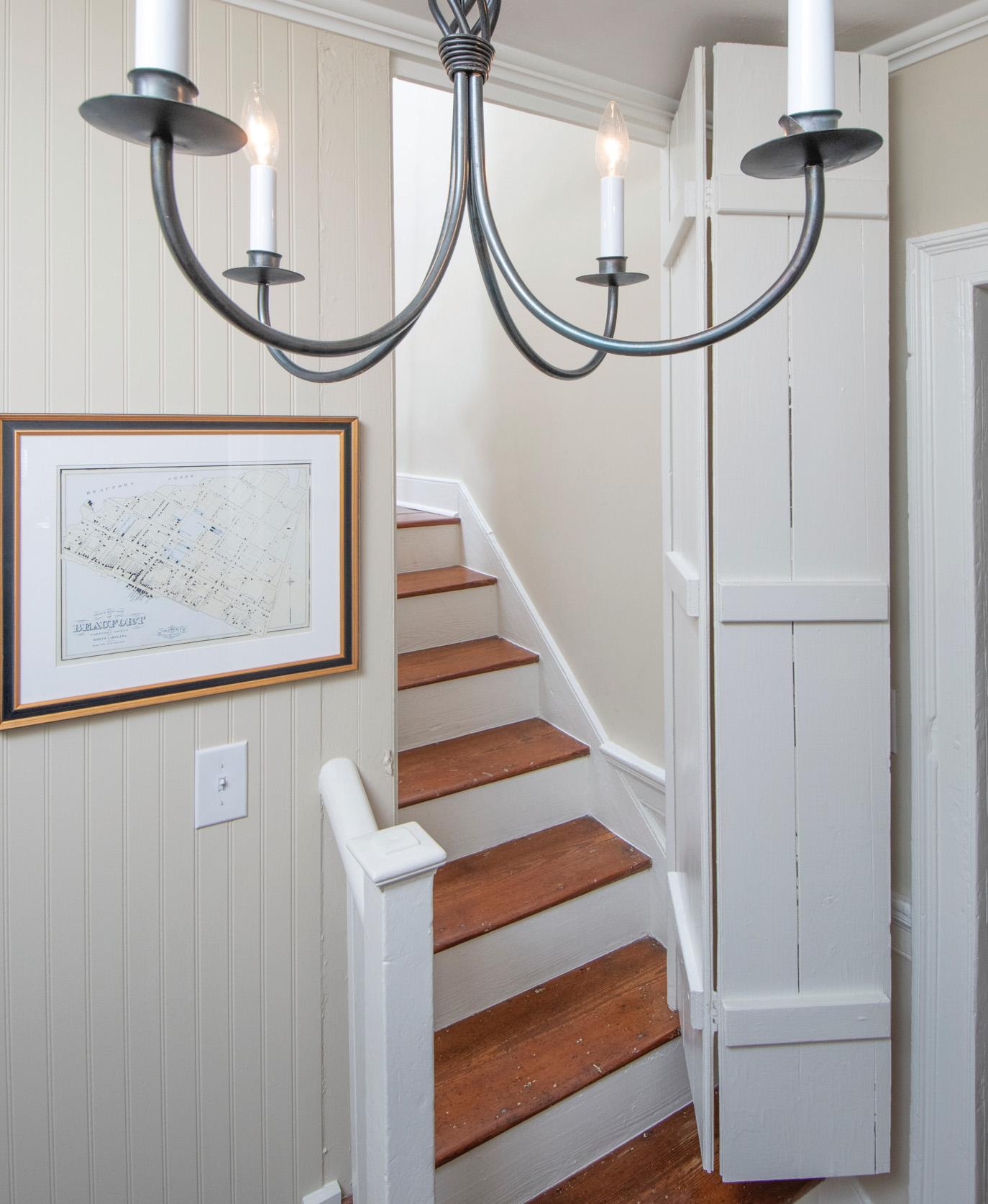
52 | WALTER
Est. 1785
 by AYN-MONIQUE KLAHRE photography by DYLAN RAY
by AYN-MONIQUE KLAHRE photography by DYLAN RAY
The
& Soul of Raleigh | 53
Art
A Raleigh couple stewards the historic Wade House in Beaufort with care
When a home predates you by some 200-plus years, that’s a lot of history to shoulder. So it goes with the Wade House in Beaufort, owned by longtime Raleighites Gray and Debbie Reed. The Wade House was built by Royal Wade, the son of Valentine Wade, an early landowner and justice of the peace in North Carolina who’s said to have established the first tavern on the Outer Banks in 1757. In 1785, Royal moved to Beaufort and built this house, where he was married the next year to Phebe Bishop.

As the story goes, Royal and Phebe Wade, who had eight children, lived in the home until around 1800, when they moved to Ohio, a non-slaveholding state more aligned with their Quaker beliefs. By 1895, the home was owned by E.R. and Rose Guthrie, a prosperous fishing family. By 1910, the Guthries wanted a bigger home, so they moved the house one lot over from its original location, at the corner of Ann and Pollock Streets, to build a bigger house on the land.
The home changed hands a few times over the decades, and the Reeds bought it in 2020 as their retirement home. “We’d been down to Beaufort many times over the years and always loved it,” Gray says. “When we saw this one, we snapped it up.” Gray has long had an interest in historic homes — he was on the board at Preservation North Carolina for a time — and has deep family roots in this state. His direct ancestor, William Reed, was governor of colonial North Carolina in the 1720s, and his family has lived here ever since.
The house is a coastal cottage style, wood-framed with a simple hall-and-parlor layout and full-width front porch. A few additions have been made over the years, including a kitchen, den and screened-in porch off the back, but the original footprint is still intact. “It’s not a big house, but it’s very livable, with an open floor plan,” says Gray. The Reeds spent about a year and a half renovating the house to bring it up to date, doing mostly cosmetic work like painting and plastering, refinishing floors and shoring up ceilings. “We wanted to respect the integrity of the home, so we’ve kept everything that’s original, including floors, windows and moldings,” Gray says. “We’re happy we were able to bring it up to date while keeping most everything intact,” agrees Debbie.
As an homage to the Wade House’s history, the Reeds have filled the home with period pieces, many of them family heirlooms — and many made locally, both recently and hundreds of years ago. “Throughout the house, we’ve tried to fill it with things almost exclusively made in North Carolina,” says Gray. One example: in the tavern room, Gray had a local builder fabricate a shelf from antique wood to hold his collection of early-1900s Currituck decoys. Underneath is a painting of The Whalehead Club in Corolla.
Now that they’re settled, they’re getting accustomed to
coastal life. “We just love being a block from Taylors Creek,” says Gray. “It’s a nice place to slow it down after working for nearly 40 years.” In addition to frequently hosting friends from the Triangle, the Reeds love the sense of community they get from being in this particular part of Beaufort, meeting neighbors and tourists from their breezy front porch. “Everybody stops when they walk by,” says Debbie. “We’re always seeing people.” Gray agrees: “We’ve never had a house with a front porch and rocking chairs — it’s something magical.”
And part of the fun is sharing the history of the Wade House. “We are the oldest house on the block — there’s a house across the street that dates to 1830, and of course the one next to us was built in 1910 — and you feel a sense of stewardship,” says Debbie. “You feel like you’re just borrowing the home for a time. We want to leave it better than we found it.”
54 | WALTER
“You feel like you’re just borrowing the home for a time. We want to leave it better than we found it.” — Debbie Wade
LIVING ROOM
Just inside the front door, the formal living room “sets the tone for the house,” says Gray. “We tried to make it feel representative of the period.” The large mahogany secretary desk dates to 1740 and was built in northeastern North Carolina. “This has been passed down through the Reed family for hundreds of years,” he says. The goose decoy is a Homer Fulcher piece from the early 1900s, and a painting depicts the famed U.S.S. Constitution in the 1700s.

GUEST ROOM

Just off the living room, the first-floor guest room is meant to evoke the late 1700s through its furnishings. A replica of a 1728 Edward Moseley map of North Carolina adorns one wall (the original is at East Carolina University). The Reeds chose colors from Benjamin Moore’s Williamsburg Paint Color Collection to highlight the architecture and feel period-appropriate. “When we bought the house, the walls were all white, so It was hard to see the moldings,” says Gray. There are also personal touches, including portraits of their now-grown daughters as children.
BATHROOM
The tub and wood paneling in the guest bath date to the early 1900s.

The Art & Soul of Raleigh | 55
DINING ROOM
The centerpiece of the dining room is a restored 1800s three-board dining table. Fans of the University of North Carolina at Chapel Hill will note the ram head: “It’s a little whimsical nod to our alma mater,” Gray says. Much of the china on display came through his grandmother. “It was all from eastern North Carolina,” Gray says. The painting of the marsh is by Raleigh artist Kyle Highsmith.
TAVERN ROOM
To the left of the stairs, a small room serves as a bar. “When we are entertaining, we certainly pass through here — it’s got the bourbon!” Gray laughs. He calls it the tavern room as tribute the home’s history: “When we built the heart-pine bar, I kept thinking about Valentine Wade owning one of the first taverns in the Outer Banks.” Here, Gray displays a collection of 1900s Currituck decoys by Ned Burgess, Bob Morse and Rufus Roberts. “The characteristics are all the same; all those makers knew each other,” he says.
DEN
The den is an addition to the original home. The painting of the house in here is by Beaufort artist Heather Sink. The console table was made by Charleston craftsman Capers Landrum Cauthen from pecky cypress that sunk into the Edisto River around the time of the Civil War.


KITCHEN
“We try not to cook too much in here; we have so many great restaurants nearby!” says Gray. The previous homeowners installed the walnut countertops to tie the newer room into the rest of the home.
BEDROOM
In the primary bedroom, a Highsmith painting depicts the couple’s favorite beach in St. John, United States Virgin Islands. Here, they had to repair sagging ceilings and installed the wood paneling for a period look. The green blanket chest is the oldest piece in the house, says Gray: “It was made in North Carolina around 1730 and belonged to my grandmother’s family.”
56 | WALTER



The Art & Soul of Raleigh | 57

58 | WALTER
Erica Heilmann, owner of Gathering Gallery.
RENAISSANCERaleigh
Downtown shut down two years ago — now women are driving its growth
 by HAMPTON WILLIAMS HOFER photography by BRYAN REGAN
by HAMPTON WILLIAMS HOFER photography by BRYAN REGAN
The Art & Soul of Raleigh | 59
Off Moore Square on Hargett Street, Read With Me boasts a charming window nook and sunny shelves of varied titles, a whimsical bookshop dream. Today, the store bustles with children, but this time two years ago, its windows were covered in plywood, that window seat dark and empty.
When the pandemic shut down downtown Raleigh, Read With Me owner Christine Brenner, a former school librarian, personally drove online orders for books to her customers’ homes. “Parents all of a sudden had to work and teach from home, so I was hoping that by doing a little thing like bringing their books to their houses, I could help take one worry off their minds,” says Brenner, who added lollipops and coloring sheets to orders to lift spirits.
Evette Hunt, owner of Evette’s Beauty Salon on South Wilmington Street,
remembers those days as sad. “I was one of the few on my block that could still operate,” she says. “It wasn’t business as usual, but it was still business.” The 30-year veteran of the hair-styling industry had to cut back on clients and hours to accommodate downtown curfews and Covid protocols. Her daughters helped her paint her plywood with messages of support — for downtown and for the spirit of Black Lives Matter. “There is no division; when we struggle, we struggle together,” Hunt says.
Both women are examples of the optimism and fortitude in a recovering city center. “Downtown has made such progress in the last 20 years, but the last two have been very difficult,” says Greg Hatem, founder and managing partner at Empire Properties, which owns several buildings in downtown Raleigh. “Seeing local businesses lining our storefronts is really impressive, not only because we have activity downtown, but because they are showing off some of the best Raleigh has. There’s a renaissance happening right now.”
Hatem has noticed that much of this rebirth is being piloted by women. Within three blocks in the heart of downtown, between Moore and Nash Squares, some dozen female-owned businesses offer culture and intrigue, leading the charge to bring back down-
town. Among them are a handcrafted jewelry studio, a dessert bar, a salon, a succulent shop and a Tanzanian clothing boutique. The Downtown Raleigh Alliance lists nearly 100 businesses that are at least 50% female-owned. “It’s an unbelievable number, and likely something that has never happened before in downtown Raleigh’s history,” says Hatem. “Each woman has a story to tell, and all of them are helping not to just bring back downtown Raleigh, but to reshape it as an interesting place to shop and visit.”
“I am so proud of the female entrepreneurs in downtown Raleigh,” says Roxanne Lundy, storefront manager for the Downtown Raleigh Alliance. She says that the DRA has intentionally dedicated resources to recruiting female- and minority-owned businesses in downtown Raleigh. One way is through its grant programs, like the Storefront Upfit Grant, which has awarded support to eight such businesses since last year, including TG Floristry, Designed for Joy and Hartwell.
Statistically, women reinvest most of their income in their families and communities — nearly 90%, according to a Clinton Global Initiative report, versus 35% for men. These female business owners are setting an example for those to come and serving as allies to each other, united in their passion for Raleigh and its people.
Business owner Megan George Cain’s story began here: When she was a little girl, her scientist parents often took her to the North Carolina Farmers Market, Pullen Park and the downtown Raleigh museums. They also filled their suburban home with greenery. So when Cain had

60 | WALTER
O
Sarah Moody, owner of Curate Raleigh.
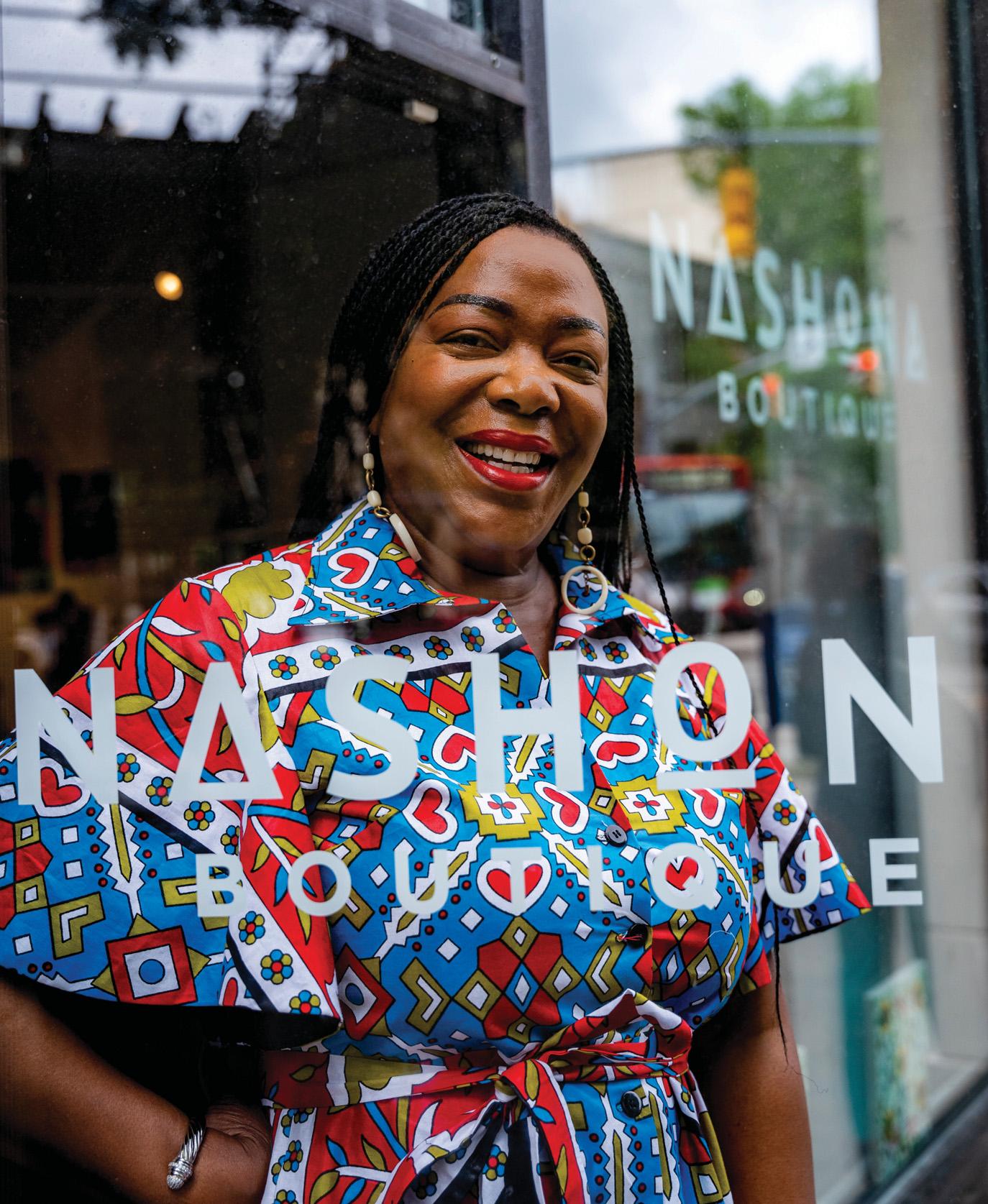
| 61
Lilian K. Danieli, owner of NASHONA. The Art & Soul of Raleigh

62 | WALTER
Evette Hunt, owner of Evette’s Beauty Salon.
the opportunity to open a plant and gift shop on South Wilmington Street, she jumped. “What once made downtown Raleigh so great is still there,” she says. “It’s the variety of communities that support one another, and the understanding that we have strength in our unique offerings.” She co-founded her shop, The Zen Succulent, with her mother. The store offers a variety of houseplants and hand-made terrariums, as well as workshops in floral arranging, hanging planters, spoon carving and terrarium building. “It is wonderful to see a lot of this growth led by women business owners,” Cain says. “I am honored to have my small part in it.”
DECO Raleigh on South Salisbury Street offers a colorful collection of local goods and gifts, and boasts Raleigh’s first sidewalk mural as well as its first parklet — a sidewalk extension built
Pam Blondin, owner of DECO Raleigh.
commerce, but more as a flagship for the community.” The retail store showcases independent makers of everything from high-fiber towels adorned with Raleigh’s signature acorn to North Carolina honey and barbeque sauce to cheeky greeting cards and wooden children’s toys. “We try to reflect the community by supporting local artisans and makers, and we try to bring the people together by being a place where folks run into their neighbors and know the staff like family,” Blondin says.
Goldsmith Lauren Ramirez runs
“We’re excited to be welcoming people back in the shop,” says Ramirez. “Though I was astonished at how many new people I was able to connect with over the pandemic, even as business was slower.”
over two parking spots that serves as a tiny green space. These touches are owner Pam Blondin’s love letters to the city. She spent 15 years living and working downtown before she decided to open her shop in 2012. “I usually go straight for the ‘cool shopping district’ in other cities, so that’s where I started with the DECO concept,” says Blondin. “I don’t think of the store as a source of

Quercus Studio next door, where she has been using recycled precious metals and stones to make one-of-a-kind pieces of jewelry since 2014. At Quercus, which is Latin for “oak tree,” Ramirez specializes in custom wedding and engagement rings, but offers a selection of other fine jewelry and gifts in her boutique workshop where her sidekick, a loyal pup named Alfred, hangs out at her feet.
Brenner, Blondin and Ramirez remember the first surge of downtown vibrancy a decade ago. “I’ve been in Raleigh for 30 years and am really proud to have helped make small changes that help the bigger community thrive,” says Blondin. Similarly, when East Hargett Street salon Alter EGO Salon and Blow Dry Bar opened in 2008, co-owners Dana Rosa, Shawn Turnbull and April Hunter (two sisters and their mother) felt called to invest in the area. “Downtown was a ghost town when we moved here,” says Turnbull. “We thought of ourselves as pioneers, contributing to a walkable, connected and eclectic community.”
That spirit permeates the businesses, and their relationships with each other. “I’ve met many incredible female business owners since opening my shop,” says Ramirez, who credits Blondin as an
The Art & Soul of Raleigh | 63
“We try to reflect the community by supporting local artisans and makers, and we try to bring the people together by being a place where folks run into their neighbors and know the staff like family.” — Pam Blondin
early cheerleader of Quercus. “DTR is a tight network.”
This collective of like-minded female business owners is part of what attracts new women to downtown. Last year, Erica Heilmann opened Gathering Gallery, a retail shop employing adults with intellectual and developmental disabilities. On a mission to support local artisans, Gathering Gallery sells eco-friendly items like candles, jewelry, chocolates, art prints and curiosities from fair-trade brands. “The atmosphere is encouraging and welcoming to new businesses,” Heilmann says.
She’d wanted to live downtown ever since moving to the Triangle in 2008, and finally made it happen last year. “I am excited to own a business downtown and become part of the landscape and culture of the city,” she says. “I am honored to join so many other successful women entrepreneurs ensuring Raleigh is a community-driven, welcoming place to be.” Every detail of her store is intended to support the community around her: She hands out
tokens for meals at A Place at the Table, partners with local brands and makes sure her aisles can accommodate strollers, mobility aids and dogs. “I’m proud our business is both missiondriven and serviceoriented,” says Heilmann.
She’s not the only one running a business with a higher purpose in mind. Lilian K. Danieli, a Tanzanian native who lives in Raleigh, sells her women’s clothing line NASHONA through a West Hargett Street storefront she opened last November. “I was attracted to this location because of the diversity of people, art, museums, HBCUs, street festivals and eclectic mix of restaurants,” she says. Driven to serve both her local and global communities, Danieli dedicates a portion of all sales to the Shalom Orphanage Centre in Karatu, Tanzania. “I feel a responsibility to spiritually, physically, mentally and financially support my family, our clients and the children of orphanage,” Danieli says.
Curate Raleigh, formerly known as Triangle Pop-Up, opened on West Hargett Street in November 2020. “We had no experience with retail, but we jumped when the Downtown Raleigh Alliance and Empire Properties presented the opportunity,” says founder Sarah Moody. Curate gives more than 60 local vendors a platform to share their brands
and connect to the community.
Moody initially experimented with a two-month lease and had such success that she signed on for three more years. “It feels like we are right in the center of all the bustle and get great foot traffic,” she says. “There are also a few new retail shops around us, which helps consumers think of this area as a shopping district, rather than just a place for food and beverage.”
Moody looks around at the growing capital city and delights in seeing more homegrown brands filling the formerly boarded-up, empty storefronts: “When people choose to shop local, they are helping our community thrive.”
Female business owners old and new are motivated to stay downtown. “We feel a responsibility toward downtown, our staff and our clients. We want to make a positive and lasting impact,” Turnbull says. Danieli says that the female entrepreneurs supported her from the beginning: “Several women business owners visited to welcome me, pray with me for continued success, shop and dance — yes, dance! We do a lot of that here!” Just recently, says Ramirez, a guest came into Quercus who was referred by Read With Me, followed by another guest referred by The Zen Succulent.
Brenner says that her store would not have survived the past two years without deep community support. She wants to pay it forward: “I want everyone to feel welcome and excited to be back.”
The momentum is there, agrees Hunt: “I can feel it. When we have First Fridays, when we have bluegrass playing on the street, it gives me hope. We are moving forward.”

64 | WALTER
Lauren Ramirez, owner of Quercus Studio.
Courtesy Lauren Ramirez (QUERCUS)

| 65
The Art & Soul of Raleigh
Christine Brenner, owner of Read with Me.
Cape Fear River


ATLANTICOCEAN










66 | WALTER
Headed to the coast? Consider this fresh take on the story behind North Carolina’s most popular pirate









TRUTHS & TALES
by ADDIE LADNER & REYNA CROOMS illustrations by GERRY O'NEILL



The Art & Soul of Raleigh | 67
ing that
Bath Ocracoke/ Springer's
Beaufort Inlet Money Island
NEUSERIVER PAMLICO RIVER
Point
PAMLICOSOUND
It’s 1715, just off the colonial North Carolina coast. A sloop flying a black flag decorated with a horned skull approaches. At its helm: Blackbeard the pirate, a gruesome sight with smoke streaming from his braided hair and a severed head in his hands. His crew swings onto the deck, swords in hand, ready to strike down any other ship in their bloodthirsty, unrelenting quest for treasure.
According to North Carolina research historian Kevin Duffus, very little of that is true. “Most everything you’ve ever read about Blackbeard is wrong,” Duffus claims. Read on for clues to sort between the truths and tales of this famed pirate — and for ideas to get out and do some exploring for yourself.
REVISITING HISTORY
An interview with a man who is on a mission to uncover the truth about Blackbeard.
Kevin Duffus first became fascinated by pirates as a young boy, when he watched the 1968 film Blackbeard’s Ghost. “At the time I didn’t understand that history can be fictionalized — I was just so interested in this Blackbeard,” says Duffus. Shortly after, Duffus’ father, who was in the Air Force, was posted in Greenville. Duffus started researching the area’s history and discovered that the infamous character he’d seen in the movies had died not far away, in Ocracoke.
So, at 17, Duffus and two friends hopped on their bikes to visit the barrier island and experience the history for themselves. “It took us over two days to get there. That was the beginning of my quest to find Blackbeard,” Duffus says.
He explored the coast, looking for the landscapes he saw in the film, like the high cliff where, in the movie, Blackbeard had built himself an inn from salvaged timber. But when Duffy asked locals at a community store where to find that cliff, “they said, son, the highest point here is only about 8 feet,” Duffus says. “I began to realize you shouldn’t learn history by watching movies.”
Since then, Duffus, a longtime television producer who now owns a production company focused on history and tourism, has logged thousands of hours conducting primary research on pirates, and on Blackbeard in particular. He spent a week in England’s National Archives, going through log books and correspondence of Royal Navy ships stationed in Virginia in the early 1700s.
He has also done research on foot: He once discovered a grave, covered in vegetation, along the banks of the Tar River. “Even trusted institutions like museums and park services have helped to perpetuate the historical fraud of the legendary pirate,” Duffus claims. “I’ve been working to winnow out all of the unsupported claims, to weed out the three centuries of myth and legend.”
In 2008, he published The Last Days of Black Beard the Pirate, which is now in its fourth edition and one of six books he’s authored about maritime history.
In 2014, Duffus was honored as North Carolina Historian of the Year by the North Carolina Society of Historians. We spoke to Duffus to learn why he believes that Blackbeard’s story is more complicated — and more important to North Carolina’s history — than the popular narrative suggests.
YOU

SAY PIRATES DON’T MATCH UP WITH WHAT MANY OF US HAVE IN OUR HEADS — WHY?
Pirates were indistinguishable from the rest of society. They dressed the same, they talked the same. There’s no such thing as pirate clothing, eye patches, earrings or tattoos — that’s been largely invented.
So often, popular culture portrays pirates as living in their own little world at sea, without the external events and forces that would have shaped real life. Blackbeard’s world was complicated. It involved wars between nations, economic distress, social stratification, legal irregularities and lost or destroyed official records. In Colonial America in the 1700s, the era considered the Great Age of Piracy, it was hard to establish a life. People who lived here would do whatever was necessary to survive.
Around the town of Bath, North Carolina, the years before Blackbeard became a pirate were marked by political discord, drought, famine and yellow fever. Often, a group of down-and-out sailors would set out by boat to raid a merchant’s vessel to quickly raise some funds. They’d fire a gun or cannon, then they’d raise the black flag signaling they

68 | WALTER Getty
Images
were pirates; the merchant ship would typically be outnumbered and surrender. Battles and bloodshed were rare. Usually, these pirates would simply detain their victim’s vessel for an hour or two while they searched their cargo for valuables like food, wine and shoes.

SO PIRATES WERE EVERYDAY PEOPLE?
Yes, they were everyday mariners. It was a way to make some quick money, then return to your family and normal life. And there’s some gray area, too: Some professional mariners were privateers, which meant they were authorized to attack enemy ships. England was gearing up for war with Spain, so they’d enlist these mariners to do their work. There were no police, there was no one preventing this pirating from taking place, so there was no real danger of being caught. It became so popular that there are records of hundreds of men doing it.
WHEN DID THE CURRENT VERSION OF A PIRATE BECOME POPULAR?
Only once people started making money off the legends. Around the late 1800s, there were a number of artists, like Howard Pyle, who began creating illustrations of pirates. Then came a number of films that romanticized the pirate life, starting in the mid-1900s. That’s when the distinctive pirate look and manner of speaking coalesced. No one said “Arrgh!” until Robert Newton played Long John Silver in the 1950 film Treasure Island.
WHAT ABOUT THE IDEA OF BURIED TREASURE?
Buried treasure is also a ridiculous myth. If you took a small chest, let’s say 6 cubic feet, and filled it with gold, it would weigh 9,500 pounds! How would you move that, let

alone bury it? The rumor probably came about because during that time, if you had valuables and didn’t have a safe, you’d bury them in your backyard.
WHAT’S BEEN YOUR BIGGEST REVELATION ABOUT BLACKBEARD?
A year or so into my research, some records showed that Blackbead had a sister, Susanna White, who lived on the banks of the Tar River near Washington where he’d visited. After searching this swampy area, I found the headstone of Susanna White near a bridge over the Tar River in Grimesland. When I read the tombstone, I realized she couldn’t have been his sister: She was born 37 years after Blackbeard died. For many years after that, I’ve been haunted by her identity and why folklore associated the two.
I finally proved her identity by poring over the deeds at the Pitt County Courthouse. It listed a transfer of property from a Salter family member to her

The Art & Soul of Raleigh | 69
courtesy Kevin Duffus
A rendering of Blackbeard’s last battle painted by Jean Leon Gerome Ferris in 1920.
“children and grandchildren,” including Susanna White. She was the granddaughter of barrelmaker Edward Salter, who plays a huge role in the narrative of that time. For a while, history told us Salter was a pirate with Blackbeard and was hanged. But after research in England’s National Archives and the North Carolina Archives, I discovered he wasn’t hanged. After he was pardoned and released from custody, Salter returned to Bath. He became a representative of Bath at the colonial legislature and a patron for the construction of St. Thomas Episcopal Church, and had a productive life and a family.
WHAT HAVE YOUR FINDINGS LED TO?
The majority of Blackbeard’s inner circle of officers were from Bath and the Pamlico region of North Carolina. He had close relationships with the colony’s collector of customs, Tobias Knight, an enslaved Black man named Caesar and John Martin, the son of the town’s founder. This leads me to believe that Blackbeard himself was from this area or had strong ties to the town.
That contradicts a lot of the accepted history. People believe that Blackbeard’s real name was either Edward Thatch or Edward Teach, and that he was from Bristol, England or the Caribbean. But it
BLACKBEARD’S DIARY
never made sense to me that an out-oftowner could sail to Bath and tell people what to do, or that even someone from Jamaica would have strong, trusting relationships with locals. These people were willing to fight and die for him.
WHAT DO WE KNOW ABOUT BLACKBEARD’S LAST DAYS?
It was a time of great uncertainty, danger and betrayal. A number of Blackbeard’s former pirates left him to return to honest lives. I believe that he would have done the same, but by the autumn of 1718, Blackbeard had become notorious throughout the colonies for some of his acts of piracy, one of which was a blockade of the port of Charleston. By this point, his ship, the Queen Anne’s Revenge, would have been crowded with as many as 400 pirates — he’d have had no choice but to continue committing acts of piracy to keep everyone fed and mildly intoxicated.
He tried to return to Bath, where colonial governor Charles Eden had given him a pardon. But it was worthless — he had violated its terms and everyone knew that, including Virginia’s lieutenant governor, Alexander Spotswood, who hoped to burnish his reputation as a vanquisher of pirates. About that same time, rumors were afloat that the King
of England had issued a new pardon for pirates, with more generous terms, but no one one knew when it would arrive. So Blackbeard and his crew were laying low at Ocracoke, not sure of where to go or when or if they were being hunted.
They waited too long. They were surprised by Royal Navy Lieutenant Robert Maynard, who Spotswood had hired to capture Blackbeard, with a crew of 60. Maynard shouted that they were there to take Blackbeard dead or alive. Hoping to stand his ground, Blackbeard fired the first shots — an act of treason! And in fewer than six minutes of hand-tohand combat, the king’s men bested the pirates. A highlander with a broadsword was said to have slashed Blackbeard from behind, cutting off his head. Yet, Spotswood’s invasion of his neighboring colony was illegal: He had no authority to arrest or kill pirates within the inland waters of North Carolina. Three weeks after Blackbeard’s death, the king’s new pardon arrived in Virginia.
I reconstructed this based on three sources. One was a letter I found in the British National Archives written by Royal Navy captain Ellis Brand, who supervised the expedition — it’s the most detailed and reliable. Maynard wrote a letter to a friend that added a few more details. The third source, based on hearsay

Duffus reconstructed the last six months of Blackbeard’s life through colonial court records and correspondence between Royal Navy officers. Here’s what he believes happened in 1718.
July 1Aug. 22Sept. 1Sept. 14 - 15 July 15
Blackbeard arrives in Bath for the first time in about two years after wrecking the Queen Anne’s Revenge in the Beaufort inlet on June 10. North Carolina colonial governor Charles Eden issues Blackbeard and his fellow pirates a Royal Pardon from the King of England.
Blackbeard, aboard his 64-foot-long, 84-ton sloop Adventure, leaves Bath to sail to Philadelphia. He anchors either in Philadelphia or in the Delaware Bay around August 1. The governor of Pennsylvania issues a warrant for his arrest.
East of Bermuda, Blackbeard intercepts two French ships. He allows La Toison d’Or to continue her journey to France with both crews, but steals the Rose Emelye and uses his own crew to sail her to Ocracoke.
Blackbeard anchors at Ocracoke and de-rigs Rose Emelye to salvage its parts — stripping it of ropes, anchors, masts and sails — to refurbish the Adventure
Blackbeard visits Bath to consult with Tobias Knight about stealing the Rose Emelye, an act of piracy that violates the terms of his pardon. They decide to assert that the ship was found abandoned at sea and claim salvage rights.
70 | WALTER
but reasonably trustworthy, was a news report published in a Boston newspaper that recounts eyewitness testimony about the battle at Ocracoke.
WHAT’S NEXT IN YOUR RESEARCH?
I’m searching in Charleston and Philadelphia for more that could help us complete his story. A great mystery I’d love to pursue is what happened to Blackbeard’s log book. On January 3 of 1719, Maynard returned to the James River in Virginia with Blackbeard’s head. Letters found in my research say he recovered Blackbeard’s “pocketbook,” which would have been a diary with a list of receipts and other papers. When Blackbeard was killed, the Royal Navy took the log book from his sloop to London, but from there, it disappeared.
WHO WAS BLACKBEARD TO YOU?
After years of research and analysis, I still don’t know Blackbeard’s true identity or origins with absolute certainty. Despite being a hugely popular historical figure, he remains a silhouette in the fabric of time.
That’s the ultimate Blackbeard treasure: his identity.
This interview has been condensed and edited for clarity.
Blackbeard visits Bath to attend a hearing arranged by Knight in order to receive salvage rights to the Rose Emelye — which, by then, has already been burned and sunk near Ocracoke Island.

After his hearing, Blackbeard hosts a weeklong party with another pirate crew. It includes the notorious English pirates Charles Vane and Calico Jack, who happen to be passing by on their way north.
By this date, Blackbeard leaves Bath never to return. His whereabouts over the next 17 days are unknown, but Duffus speculates that Blackbeard visited a relative who lived along the Neuse River.


Blackbeard runs the Adventure aground on the Brant Island Shoals, along the western end of Pamlico Sound. Soon afterwards, a mariner in a second sloop helps Blackbeard and his 16 shipmates free the ship. From there, they sail about 27 miles to the east end of Ocracoke.
Two sloops containing Lt. Robert Maynard and a naval expedition of 60 men arrive at Ocracoke and anchor for the night. At 9 a.m. the next morning, Maynard heads toward Blackbeard’s boat, and soon the battle is underway. By 11 a.m., Blackbeard and nine of his men are dead.


The Art & Soul of Raleigh | 71 Oct. 1 Oct. 30Nov.17Nov. 21 - 22 Sept.
24
courtesy New York Public Library (PAINTING); Getty Images (STAMP); public domain (CIGARETTE CARD)
Clockwise from top left: Blackbeard Buccaneer, a 1922 painting by Frank Schoonover; a Bahamian stamp featuring Blackbeard; Blackbeard as depicted on an Allen & Ginter cigarette card.
6 BLACKBEARD MYTHS, DEBUNKED
Some far-reaching tales of the famous pirate that Duffus has disproven through his research.






BLACKBEARD HAD SUPERHUMAN STRENGTH
Historians and writers have referred to Blackbeard as “the most ferocious pirate of his time,” “a swaggering, merciless brute” with “inhuman strength.” But in the documents Duffus found recounting the final battle at Ocracoke — when Blackbeard and nine pirates engaged the Royal Navy sailors — every pirate was killed and none of the king’s men died. “Two months earlier, when Blackbeard got into a tussle with a Pamlico planter in a boat, he had to call for help because his opponent was getting the better of him,” says Duffus. That leads him to believe that Blackbeard was certainly not superhuman, and not much of a fighter, either.
BLACKBEARD LIT HIS BEARD ON FIRE AS A SCARE TACTIC
There may have been smoke, but it wasn’t meant to inspire fear in humans. Mosquitoes were very bad around the coastal waters, and Duffus says it’s possible that Blackbeard stuck slow-burning fuses under
his hat to keep the pests away. He guesses that likely started as a joke around the campfire and grew into a legend. “It is entirely illogical and impractical that lighted matches, or slow-burning fuses, would have frightened anyone, except Blackbeard himself — he could have set his own beard on fire,” says Duffus.
BLACKBEARD WAS CRUEL, EVEN BRUTAL
There are a lot of stories about how Blackbeard mistreated women, but Duffus says he’s found no evidence to support those claims. Yes, pirates were criminals, but most of them, like Blackbeard, were cordial and social — records show that he was even nice to ship captains. “I don’t know that Blackbeard ever harmed anyone until his final night at Ocracoke,” says Duffus.

BLACKBEARD IS FAMOUS BECAUSE HE WAS A SUCCESSFUL PIRATE Duffus says that Blackbeard was only a pirate for about two years — the thing that made him famous was his name. “It was unusual for anyone
to have a nickname like that,” Duffus says. “Using this pirate alias, Blackbeard, can be compared to a French soldier’s nom de guerre, a means to prevent dishonor from falling on their family members.”
BLACKBEARD DIED IN HIS LATE 30S OR EARLY 40S



This approximate age of Blackbeard’s death, Duffus says, came from Robert Lee’s 1974 biography of the pirate. It was based on the popular engraving made in 1724 by an artist in Oxford, England — but this artist never laid eyes on his subject. Based on his examination of records, Duffus believes Blackbeard died around age 27. This makes sense, as it was the median age of pirates during the Great Age of Piracy in the late 1720s.
BLACKBEARD’S FLAG SHOWED A SPEAR AND A BLEEDING HEART



The flag widely associated with Blackbeard, featuring a bleeding heart and a horned skeleton holding an hourglass and spear, never belonged to the pirate, says Duffus: “The evidence is irrefutable. It was not until the 1978 publication of The Pirates of the Spanish Main, written by the English adventurer and TV presenter Douglas Scott Botting, that this flag was attributed to Blackbeard.”
He may, however, have had a black flag with a skull on it: Duffus’ research says that when Blackbeard detained the Mountserrat Merchant near Nevis in November 1717, the stern of his Queen Anne’s Revenge displayed a flag described in a deposition as a “Death Head.” Four months later, when Blackbeard’s flotilla of vessels captured the Protestant Caesar off Honduras, witnesses again described “Black Flags with Death Heads on them.”
72 | WALTER
(FLAG)
Public Domain
EXPLORE IT YOURSELF
Four legendary pirate stomping grounds along the coast.
While we may still be sorting fact from fiction, these sites along the North Carolina coast offer opportunities to learn more about Blackbeard — and may serve as a jumping-off point for your own pirate research.
OCRACOKE ISLAND
Ocracoke Island is probably the spot most famously associated with Blackbeard. It’s said to have been popular with pirates for its maritime forest, Springer’s Point, which faces the Pamlico Sound to offer seclusion and fresh well water. It’s also where Blackbeard would take his final breaths, in a battle with the Royal Navy in 1718. Today, it’s a nature preserve that’s accessible to the public with trails, sandy beaches on the sound side and tranquil live oak trees. And there’s a well that likely funnels the same fresh water today as it did 300 years ago. “There is little doubt that this well is the same source of fresh water depicted on John Lawson’s map of 1709 and Edward Moseley’s map of 1733,” says Duffus. “The bricks were added in the 1850s.”
MONEY ISLAND



It’s long been believed that Money Island, a spot off the mouth of Bradley Creek in Wilmington, was a hiding spot for pirate treasure. As the story goes, the pirate Captain William Kidd left several chests of gold here in the late 1600s — but later tellings swap Blackbeard’s name for Kidd’s. Either way, Duffus says, that story is likely fictional and can be traced to the 1908 novel Money Island by Andrew J. Howell, Jr. “Howell’s story was clearly a work of fiction; Captain Kidd never landed on North Carolina soil,” Duffus says. “But in 1926, a reporter for The Charlotte Observer wrote a column about the ongoing mystery of the location of Kidd’s treasure on Money Island.” Today, the small island is only accessible by boat or paddle board, but it still offers a lovely ocean escape, plus treasure in the form of seashells along its shore.
BATH
Situated along the Pamlico River, Bath is the oldest town in North Carolina. It’s here, Duffus hypothesizes, that Blackbeard — whose real name may have been Edward Thatch or Edward Teach — lived before his days as a pirate. “Blackbeard had close relationships with locals and extensive knowledge of the shal-






An aerial view of modern-day Ocracoke Island.

low waterways leading from the ocean to the town, which leads me to think he lived here as a youth,” says Duffus. Today, the town has a population of little more than 200 people, but still houses the colonialera St. Thomas Episcopal Church (built in 1734, it’s the oldest church building in the state), views of the Pamlico Sound and a historical marker claiming that Blackbeard lived there.
BEAUFORT INLET
Legend holds that Blackbeard spent time in this charming town along Taylors Creek, specifically in its oldest home, the Hammock House — and even that it’s haunted by the ghost of a woman Blackbeard hanged here. While that’s probably not true, this area and the waterways near it have a strong connection to Blackbeard’s story: In June of 1718, Blackbeard wrecked the Queen Anne’s Revenge in the Beaufort Inlet, and it was discovered there in the late 1990s. Visit the nearby Maritime Museum on Front Street in downtown Beaufort to see artifacts from the ship itself.
The Art & Soul of Raleigh | 73
Getty Images

74 | WALTER
giving garden

 by CATHERINE CURRIN photography by TYLER CUNNINGHAM
by CATHERINE CURRIN photography by TYLER CUNNINGHAM
Urban Ministries’ clinic volunteers provide healthy produce for their patients
The Art & Soul of Raleigh | 75
A scene from the Urban Ministries garden.
Hidden behind industrial buildings on the edge of Capital Boulevard is an abundant, 880-square-foot garden. In the height of summer, it’s filled with ripening tomatoes, a surplus of field peas and sky-high stalks of okra.


For the past decade, volunteer physicians at the Open Door Clinic of Urban Ministries have made it their mission to provide healthy food to those in need. The clinic provides medical care and pharmacy services to low-income, uninsured adults in Wake County who do not qualify for Medicaid. The mission of Urban Ministries, a nonprofit that’s been in Raleigh for more than 40 years, is to serve those affected by poverty through avenues like nutrition, health care and housing. The organization also provides hunger assistance through an on-site food pantry and an emergency shelter downtown at the Helen Wright Center.
Dr. Robert Majors and Dr. Ben Ferdon, longtime volunteers at the clinic, started the garden at Urban Ministries in 2012 to ensure low-income families had access to healthy options when receiving food assistance. “We would see a lot of patients with chronic disease,” says Majors, “and one of the things that we generally stress is a proper diet. We found that a lot of patients got adequate nutrition, but very little in the way of fresh produce.” He says that Urban Ministries already had a small plot for gardening, but they wanted to create something more substantial in terms of volume.
Thanks to land donated by commercial real estate firm Harrispark Properties, the first plot at the end of the parking lot (about half the size of the current garden) yielded around 6,000 pounds of produce annually. “We used that for three or four years, then that land was going to be developed so we had to move to another area, behind the sign shop ColorGraphic on the other side of the building,” says Majors. This current space has been growing for the past five years and can produce more than 7,000 pounds of produce each year.
76 | WALTER

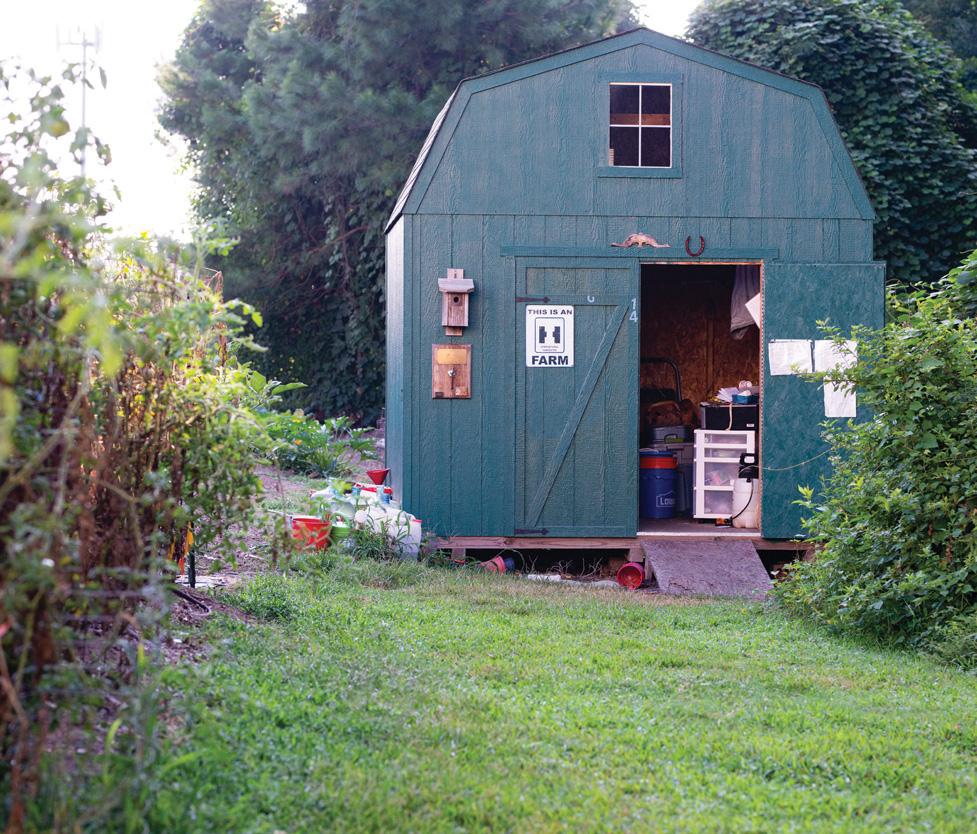

OCTOBER 2020 | 00
The Art & Soul of Raleigh | 77
Clockwise from top left: Volunteers Dr. Ben Ferdon, Charlie Smith and Dean Leake; scenes from the garden.
Clockwise from top left: Scenes from the garden; volunteer Dr. Robert Majors.



78 | WALTER
“We found that a lot of patients got adequate nutrition, but very little in the way of fresh produce.” — Dr. Robert Majors
Urban Ministries director of hunger and nutrition Nick Robertson says the half-dozen or so volunteers at the garden have a “green thumb like no other.” He has been with the organization for three years, and he’s grateful to have local produce for those they serve.


Majors learned to garden during World War II, when he tended to his own Victory Garden. “A small plot of land could feed so many people,” he says. While Majors’ garden was out of necessity, this one is a labor of love. Majors said he, Ferdon and other volunteers maintain the garden year-round, and it yields produce consistently, except at the height of winter. His favorite vegetable to grow? “I personally love the tomatoes; there are 130 different varieties in the garden,” he says. Every pound of produce is picked by hand with care and given directly to those in need — Majors says it’s usually less than a 24-hour turnaround in their now drive-through pantry.
“If you don’t have food, that can create a whole list of problems,” says Robertson. “We want to make sure we give access to a lot of produce, and the garden goes a long way.” Wake County social workers rely on Urban Ministries to support the families they work with. “During the pandemic, I started to come to Urban Ministries to pick up food for people in my neighborhood,” says Donna V., a Wake County social worker. “I do this because no one should worry where the next meal is coming from; no child should go hungry.”
Robertson says the food pantry operation has drastically changed since the pandemic: “We went from serving monthly or every three months to almost daily. We’ve served 42,000 people in this calendar year.” Their team has also added four new refrigerators, ensuring that every family receives milk and eggs. He says that before Covid there were salary thresholds in order to receive assistance, but today it’s no questions asked, as long as you reside in Wake County.
Robertson believes creating a solution to hunger is imperative. “Having a full stomach is a primal necessity,” he says. “It might be the most basic need we have.”
The Art & Soul of Raleigh | 79

80 | WALTER
from LOFT to LAUNCH
Mark Bayne sends his works to sea


 by WILEY CASH photography by MALLORY CASH
by WILEY CASH photography by MALLORY CASH
The Art & Soul of Raleigh | 81
aster shipwright Mark Bayne is standing in an open bay at his workshop in downtown Wilmington. Here, he has been teaching the art of building wooden boats at Cape Fear Community College for the past 10 years.

Over his shoulder, the murky brown Cape Fear River plods slowly eastward, where it will meet the Atlantic Ocean in just a few miles. The day is hot and bright. A stiff, warm breeze rolls in off the river. All around us, people are working on a half-dozen wooden boats in various stages of construction. There’s a
Mflats boat that was specially designed for fishermen to stand with stability and cast a line from the broad deck; beside it is a beautiful, narrow melonseed just waiting for a sail. In the far corner of the workshop is a Jersey Speed Skiff that, as soon as it’s complete, will move next door to the engine program for the fall semester, where the team who built it will fit it with an inboard motor.
After decades building boats on his own and another decade of teaching people to do the same, Bayne is accustomed to being surrounded by the sounds of saws and routers, the fine mist of sawdust floating through the air. “I’ve specialized in not specializing,” he says. “I enjoy building things and boat-building allows you to be creative.”
Bayne is quick to smile, and he’s still carrying the glow of holding a new granddaughter who was born down in Charleston, South Carolina, just a few nights before. That’s where Bayne was raised, and his whole family lives there now, including his wife and their four grown children. Bayne splits his time between the low country and Cape Fear, teaching at the college during the week and heading home on the weekend. His wife used to make the trips with him, but now that she’s surrounded by grandchildren she’s less likely to leave home.
Bayne understands. He hears the call, too: This is the last course he’ll teach as program director of Cape Fear Community College’s Wooden Boat Building Program.
82 | WALTER
Inside the Wooden Boat Building studio at Cape Fear Community College.
But in order to understand how Bayne’s time at the college is ending, you have to understand how it began.
Bayne grew up on “the backside” of Isle of Palms, South Carolina, in the marsh, sailing small boats, swimming and crabbing with his younger brother and kids from the neighborhood.
When I ask if they were ever so bold as to round the island and head for the open water, he smiles and pauses as if his mother and father are within earshot. “Officially, we did not do that,” he says, meaning, of course they did.
After a brief stint in college, Bayne dropped out and worked at Mount Pleasant Boatbuilding Company as a helper in the joinery shop, where he learned to build and fit small, intricate


parts to boats. A welder in the boatyard mentioned that he’d heard about a new boat-building program beginning up the coast at Cape Fear Community College. Bayne enrolled in 1978 and was a member of the program’s first class.
With his classmates and instructors, Bayne literally helped build the program: They put down the hardwood floor in the workshop, and they fit together the workbenches from old bowling alley lanes that had been stored in a chicken coop in Southern Pines.

After completing the program and getting his degree, Bayne went back to the Mount Pleasant Boatbuilding Company with the knowledge of how to loft boats, which is the process of drawing out plans on the floor, cutting and fitting the piec-
es and constructing the boats using hand tools.
On the weekends, Bayne worked for himself and soon found that he could make more money on his own while also building boats that interested and challenged him. In the late 1980s, he opened Sawdust Boatworks, and then he launched Sea Island Boatworks.

“No one has to have a boat,” Bayne says, “so when someone hires you to build one, it’s a very special relationship.”
He can still remember his earliest creations. The first boat he built after opening Sawdust is still around; it’s a 14foot marsh-hen hunting boat. “That guy turned into a good customer,” Bayne says. “I built multiple boats for him.”
Over the decades, Bayne traveled up
The Art & Soul of Raleigh | 83
Mark Bayne with a student; at work inside the studio.
and down the East Coast, building boats from the Gulf of Mexico to the Chesapeake Bay, including the iconic Spirit of South Carolina, a tall ship that was constructed and ported in Charleston. The keel was laid in the summer of 2001, and the final plank was installed in the summer of 2006.
“Sometimes you build a boat to a plan that somebody else drew, and sometimes you build a boat by eye. You’ve got to know a lot,” he says. “I worked with a guy in Panama City, Florida, once, and we built a 68-foot shrimp boat, just him and me. He was the master and I was the apprentice, but there was no plan, so you have to know all the construction details. When you’re doing it by hand with no plan it’s called rack of eye. It’s
fun, it’s rewarding.”
In 2012, Bayne left the boatyards of South Carolina, as well as his life as a far-ranging boatbuilder, and returned


“home” to Cape Fear Community College as head of the Wooden Boat Building Program, where his professional career had started over three decades earlier. When he arrived, he found that he wanted to bring his vast experience to bear on the program’s curriculum.


“They had a good program going, but it wasn’t the way I wanted to do it,” he says. For years, the program had focused on moving students through stages of instruction on several different boats at various levels of completion. The students learned piecemeal, but that meant that they never completed a whole boat from start to finish. “I wanted students to work from lofting to launching,” he says.
has done a great job of giving this program a shot of momentum,”
84 | WALTER
“Mark
“I’ve learned a ton from Mark. It’s been awesome. We don’t use software where everything is designed on a screen. This is 1,000 percent old school.” — Walter Atkins
Students at work inside the boatbuilding studio.
says Walter Atkins, an instructor in the boat-building program who has decades of experience building custom boat interiors. “I’ve learned a ton from Mark,” Atkins says. “It’s been awesome. We don’t use software where everything is designed on a screen. This is 1,000 percent old school.”
Over three semesters, including a summer term, students begin their work with hand tools before graduating to power tools. Then the class moves up to the loft above the shop floor, where they draw life-sized plans for the various boats they want to build.

“People slowly pair up,” Atkins says. “You see the groups start to clump together.” Recent high school graduates partner with retirees. Oftentimes, service veter-
ans find one another, bonding over their shared experiences and their interest in boat-building. It’s clear that both Atkins and Bayne find relationships with student-veterans important and endearing.
“I don’t ask about their service,” Bayne says, “but I listen when they talk about it.”
Eventually, the class moves to the shop floor, building the forms, fairing the hulls and fitting the interior cabinetry. By the end of the program, as many as six complete boats are ready for the water. Once the boats are proven seaworthy, they’re auctioned off on a public website, where eager buyers are already lying in wait. The boats are purchased by people up and down the East Coast.
Bayne takes pride in his students’ work, and he admits that, if not for his wife,
four children and growing number of grandchildren living down in the low country, he’d continue to work at Cape Fear.
But he’s not really retiring. He’ll work some with his oldest son, Coulson, who is now building boats on his own with his company Son of Bayne Boatworks.
And there’s a 145-year-old historic schooner down in Panama City that was destroyed by Hurricane Michael that Bayne wants to get his hands on. He’ll be busy, but according to him, he won’t be working.
“Boat-building has never been a job,” he says. “I’ve never felt like I had a job a single day in my life.”
The Art & Soul of Raleigh | 85










sharing STORIES
ACTION
Friday, September 16 at the Umstead Hotel & Spa Our signature innovation event returns featuring inspiring workshops and moving talks by local female leaders. WINnovation
inspiring
ANITA WATKINS Managing Director, Rex Health Ventures
JAKI SHELTON GREEN Poet Laureate, North Carolina
VALERIE HILLINGS Director, North Carolina Museum of Art
PRESENTEDBY SUPPORTED BY For tickets and more information: waltermagazine.com/WINnovation
ZENA HOWARD Principal + Managing Director, Perkins&Will

88 Alliance of Interior Designers Rock & Roll Social 88 Give Black Raleigh Her Flowers Now Opening 91 Modeling Success 92 Bank of America at Dix Park 92 Artsplosure Preview Event 93 Dancing with the Carolina Stars 94 Ready Set Vet Opening To have your event considered for The Whirl, submit images and information at waltermagazine.com/submit-photos The Art & Soul of Raleigh | 87
WALTER’s roundup of gatherings, celebrations, fundraisers and more around Raleigh. THE WHIRL THE WHIRL
Shanna Middleton
Ross Garlington, Erica Pippin and Rachel Gralington at the Alliance for Interior Designers Rock & Roll social.
THE WHIRL
ALLIANCE OF INTERIOR DESIGNERS ROCK & ROLL SOCIAL
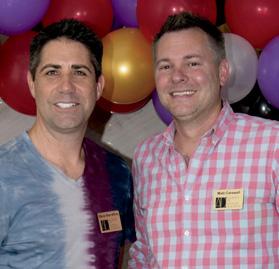





On June 1, the Alliance of Interior Designers hosted a Rock & Roll Social at Geo’s Marble & Granite. Emceed by director of programs Don Ricardo Massenburg, it was the first official AID social in over two years, and included cocktails, refreshments, socializing, games and a tour of the Geo’s showroom.
GIVE BLACK RALEIGH HER FLOWERS NOW OPENING

On Friday, May 6,


ney
tured
88 | WALTER
Tyler Cunningham (PORTRAITS); Shanna Middleton (GUITARS)
Tonya Hill, Don Ricardo Massenburg, Shanna Middleton
Antoine Ponton, Laura Koshel
Cheryl Crooms Williams
Linda Dallas, Samantha Everette
Anchorlight celebrated the opening of Give Black Raleigh Her Flowers Now, an exhibition for Black Oak Society and its founder, Court-
Napier. A tribute to the Black women who built Raleigh, the exhibit fea-
portraits by Triangle photographers including Derrick Beasley, Samantha Everette, Anthony Fitzpatrick, Phill Loken and Cornel Watson.
Shanna Middleton, Jane Dagmi, Laura Burk, Kimberly Mack
Molly Craig Cordell, Nadia Flynn, Katie Conger
Steve Marraffino, Matt Carswell
Crissy Sanders, Aerial Sanders
Courtney Napier
Judy Melvin, Courtney Napier, Barry Melvin















SUBSCRIBE TODAY 12 ISSUES PER YEAR 1 YEAR $25 2 YEARS $45 3 YEARS $60 waltermagazine.com/subscribe or call 910.693.2506 take a break with us
THE WHIRL
MODELING SUCCESS
On May 19, Models for Charity and Dress for Success clients modeled spring and summer outfits from local boutiques to benefit Dress for Success Triangle’s mission of empowering women to thrive in work and in life.




Our annual female innovation summit returns with interactive workshops, networking and panelist talks from Zena Howard, Valerie Hillings, Jaki Shelton Green and Anita Watkins.
WINnovationAt Home with Frances Mayes
Come celebrate Mayes’ latest work, A Place in the World: Finding the Meaning of Home. Hear stories about Mayes’ house obsession that roam from the US to Italy, Nicaragua, Mexico, Capri and more!
Check off everyone on your holiday gift list with over 20 tables of curated local vendors. Enjoy delicious complimentary cocktails and hors d’oeuvres over festive music.



The Art & Soul of Raleigh | 91
Karen Johnson
Front row: Mackenzie Snow, Amy Gamber, Donna Rhode. Back row: Karen Johnson, Amy Baldwin, Emily Browder, Heather Dennis
Kenisha Burgess
September
December 7 October 12
Front row: Jenn Robert, Jenny Parrish, Rebecca Viverette, Sophia Bahhur, Hanah Aliback. Back row: Hanadee Ali, Ashley Utz, Melanie Porter, Sara Haan, Tanya Kadah
2022 EVENTS Our one-of-a-kind events celebrate the best of Raleigh.
16November 9
Enjoy a fram-to-table dinner with a special menu fromchef Dean Neff of Seabird, pit master Wyatt Dickson of PICNIC and Sean Wilson of Fullsteam Brewery. Celebrate the Season Taste of the Wild TICKETS & MORE INFO: WALTERMAGAZINE.COM/SAVETHEDATE
THE WHIRL


BANK OF AMERICA AT DIX PARK


In early June, Mayor Mary-Ann Baldwin and executives and staff from Bank of America gathered in the Dix Park Chapel garden to celebrate Bank of America’s commitment to Dix Park and the open, green spaces it provides. Bank of America will donate $1 million over the next four years to further the development of Dorothea Dix Park and the building of the Gipson Play Plaza.

ARTSPLOSURE PREVIEW EVENT
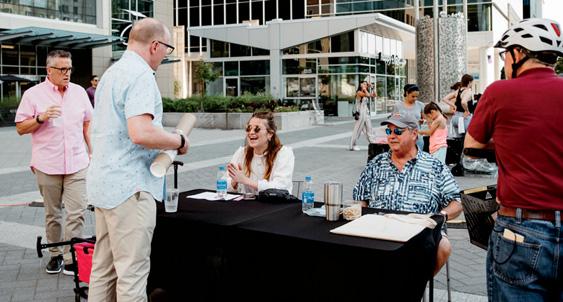

On May 20, Artsplosure invited sponsors, donors and media for a first look at Atelier Sisu’s Evanescent Bubbles, an installation from Australia that filled a block of Fayetteville Street with enormous, iridescent orbs. The evening featured sparkling cocktails and mocktails from Dram & Draught and an appearance from honorary chair Bob Rankin, a local artist.


92 | WALTER
Claren W
Financial Advisor 4301 Lake Boone Trl Suite 206 Raleigh, NC 27607 919-615-0054
Courtesy Bank of America (BANK); Three Region Photography (Artsplosure)
Englebreth, AAMS®
Rick Brown, Virginia Parker, Janet Cowell, Kari Stoltz, Ben Pattison, Mary-Ann Baldwin
Cameron Laws, Michael Lowder
Lucy Tobias, Anne Tate, Cat George
Hannah Liebel, Bob Rankin
DANCING WITH THE CAROLINA STARS



The Carolina Theatre of Durham raised more than $100,000 at its first Dancing





With The Carolina Stars fundraiser, presented by the Adam Dickinson Realty Group. The event paired professional dancers with local celebrities to compete for the audience’s votes. While the competition was close, the audience selected Jennings Brody and David Therrell as the winners. The event was hosted by Clay Aiken, with a welcome from Durham Mayor Elaine O’Neal.

The
&
of
| 93
Alec Himwich
Art
Soul
Raleigh
(855) 421-2884 BOOK YOUR SUMMER FAMILY VACATION WITH US Stay at North Carolina’s only surf to sound beach resort that is packed with fun for the entire family! BEACH DAYS are the BEST DAYS blockade-runner.com
Willie Hinton, Nadira Hurley
wrightsville beach
Adam Dickinson, Britt Spruill, Kim Lan Grout, Jack Reitz
Ricky Moore, Kristi Vincent Johnson
David Therrell, Jennings Brody
THE WHIRL




READY SET VET OPENING





On June 8, Marbles Kids Museum celebrated the opening of Ready Set Vet, a new exhibit presented by the North Carolina State University College of Veterinary Medicine. The interactive space expands upon the previous Pet Vet area in the Around Town gallery with child-sized tools, an interactive anatomy area and more.




The Home Builders Association of Raleigh-Wake County’s Parade of Homes is recognized as one of the best home tours in the country. The Parade of Homes unparalleled exposure to the Triangle residents who are looking to buy a new home or gather ideas for their existing home. Get in front of this unique audience as they visit the homes on the 2022 home tour.





94 | WALTER
Courtesy NC State University
ADVERTISE YOUR BUSINESS DURING THE 2022 PARADE OF HOMES! Two ways to market your company in the 2022 Parade of Homes PARADE PREVIEW VISIT NORTH CAROLINA’S LARGEST OPEN HOUSE OCTOBER 2-3, 8-10, 15-17 AfC Parade
Delivered
magazine
trends and builders to watch.
has
For information email cristina@waltermagazine.com or 919-279-3132 Listening for a heartbeat Ready Set Vet area
Preview Magazine
with WALTER magazine’s October Home & Garden issue, this
includes
Parade of Homes Guide Book Distributed to all visitors that go on the Parade of Homes Tour
every home on the tour along with the special features.
Fixing a broken leg
Scott Shamblee with guests
Take WALTER to go! There’s always something to discover on our website and social media. Here’s what’s been happening.
WEB EXCLUSIVE STORIES





CATCHING UP WITH KIRSTIE SPADIE

The Chatham County Line mandolin player and vocalist on playing overseas — and where he likes to hang here in Raleigh.


This former Broadway dancer has dedicated her life to encouraging young talent as the founder of the N. C. Dance Institute.

7 BOOKS FROM LOCAL AUTHORS From fiction to nonfiction, cookbooks to kids’ books, Triangle authors have been busy writing!

We know where we’ll be spending happy hour this summer! Heights House will soon open their intimate cocktail bar, The Parlor. To complement this Italianate mansion, the menu features a curated selection of Italian inspired cocktails, an all-Italian wine list + local craft beer alongside cheese & charcuterie boards.

@fmasonmedia
@Susannaklingenberg So excited for this! @spring.mulberry Simply the best!
Postcards from various places & foods that make up North Carolina from UNC food historian Marcie Cohen Ferris’s immersive book Edible NC, which came out recently.

@baxmiller
@Mallorybcash So good!! @ferrismcf @baxmiller brilliance @ryanstancil stellar producing

EXTRAS
Archives
FOLLOW US @WALTERMAGAZINE WALTER
202 47 The Art & Soul of Raleigh | 95
TRENDING ON INSTAGRAM
JOHN TEER'S SUMMER PLAYLIST, RALEIGH FAVORITES AND MUSIC MEMORIES
Personalities in town for Animazement this weekend. @bryanregan @threadmagnetcosplay Second photo is me @threadmagnetcosplay @catsweaters4life The third photo is me, @knowwei_cosplayand @yungskugge 246
Late Bloomers
A shift in perspective on a drizzly evening
by JORDAN LEE photography by BOB KARP
Iturned into the nearly-empty gravel lot that late-July evening with the sinking feeling you get when you arrive at a restaurant that closed 10 minutes earlier. As I got out of my car, the sky started spitting and I popped open my umbrella. I walked, lost in thought, looking at my feet on the patchy grass, trodden by thousands before me.
Suddenly, I was there. I looked up across the field to see… green. Stalks and stalks of green. Noooooooo! I thought. I should have made it out last week. At the edge of the sunflower field at Dorothea Dix Park, I was deflated that I’d missed the scene bursting with sunflowers that had been filling my Instagram feed.
But then I glanced over my shoulder. Behind me, like a silent flash mob just waiting for their cue, were rows of happy yellow faces. The stalks I’d seen

before were simply their backs.
I walked down one row, bright sunflower faces cresting my shoulders. The canopy of my umbrella, paired with the walls of sunflowers, insulated me from all the exterior noise. All I could hear was the static of the rain and the water falling through the leaves all around me. I walked through row after row, intoxicated by the repetition.
The rainy field yielded to patches of color. That glow of youth was evident in a just few late bloomers, heads held high, standing above the crowd.
But most of the sunflowers were well past peak. I paused to look at some mammoth blossoms: The leaves were wrinkly and brown, parched from the summer heat, their stalks prickly with 5 o’clock shadows. Their heads bowed down, chin-to-chest, gazing at their


roots. But I saw sprouts of black seeds on their faces. Raindrops had collected in the depressions of their necks — quick pit stops for the bees. They had transformed to provide new life.
The sky was starting to dim, and the rain was falling harder, so I moseyed back to my car. The droplets had quieted the dusty paths and washed the world clean. There was a brightness that was different from when I arrived. Maybe it was the rain’s work; maybe it was me.
Had I turned around instead of moving forward, had it been beaming sunshine instead of raining, I might have missed this. But the slate gray sky curtsied, and the sunflowers stepped to center stage — bright and warm.
It was a reminder that it’s all about perspectives in life. Vantage points. What you see from where you see it.
96 | WALTER END NOTE

4401 Glenwood Ave, Raleigh, NC 27612(919) 571-2881www.diamondsdirect.com
Innovation.


















It’s feeling the pulse of the next level of cardiac care and wellness. It ’s seeing possibilities where others see roadblocks. Pioneering new minimally invasive procedures and robotic-assisted surgeries. Transforming theor y into curative strategies. Even more than that, however, it ’s passion, compassion, th assion, com All joining experience, exper tise and technology. novation forces to create a special place where in saves lives. Visit us at ear ts. wakemed.org/h



Your heart. Your choice.























































































































































 Courtesy contributors; Gerry O'Neill (O'NEILL)
Courtesy contributors; Gerry O'Neill (O'NEILL)

























































 by DAVID MENCONI photography by FORREST MASON
by DAVID MENCONI photography by FORREST MASON




































































































 by JOSEPH BATHANTI
by JOSEPH BATHANTI


 by COLONY LITTLE photography by TAYLOR MCDONALD
by COLONY LITTLE photography by TAYLOR MCDONALD

















 by AYN-MONIQUE KLAHRE photography by DYLAN RAY
by AYN-MONIQUE KLAHRE photography by DYLAN RAY










 by HAMPTON WILLIAMS HOFER photography by BRYAN REGAN
by HAMPTON WILLIAMS HOFER photography by BRYAN REGAN



























































 by CATHERINE CURRIN photography by TYLER CUNNINGHAM
by CATHERINE CURRIN photography by TYLER CUNNINGHAM













 by WILEY CASH photography by MALLORY CASH
by WILEY CASH photography by MALLORY CASH




































































































